Make sure to scroll all the way down to the bottom of the article for a full playlist of videos shot by the Perfect Circuit crew at Superbooth 2019!
Finally, the wait is over and the highly-anticipated, synthesizer-focused trade show Superbooth 2019 is here. A giant crowd of electronic music enthusiasts, inventors, instrument manufacturers, artists, musicians, and engineers are roaming around the beautiful Fez-Berlin in search of new music-making wonders, fantastically programmed events and live shows, and an overall inspiration boost. Of course, we couldn’t miss the opportunity to partake in this synth-centric festival, and we are gladly reporting back to you on all the amazing new devices that we’ve spotted.
Make Noise
It seems like the Make Noise crew have been on a roll recently, creating a more stereo-friendly framework for their already powerful modular ecosystem. Just last week, the company introduced X-PAN: the 5-channel voltage-controllable stereo mixer with some great options for sound spatialization. At Superbooth 2019 Make Noise shared two more upcoming products: X-OH, a stereo output module that promises to be a best friend to the aforementioned mixer module, and the Mimeophon, a new collaboration with Soundhack that Make Noise describes as a “stereo multi-zone color audio repeater."
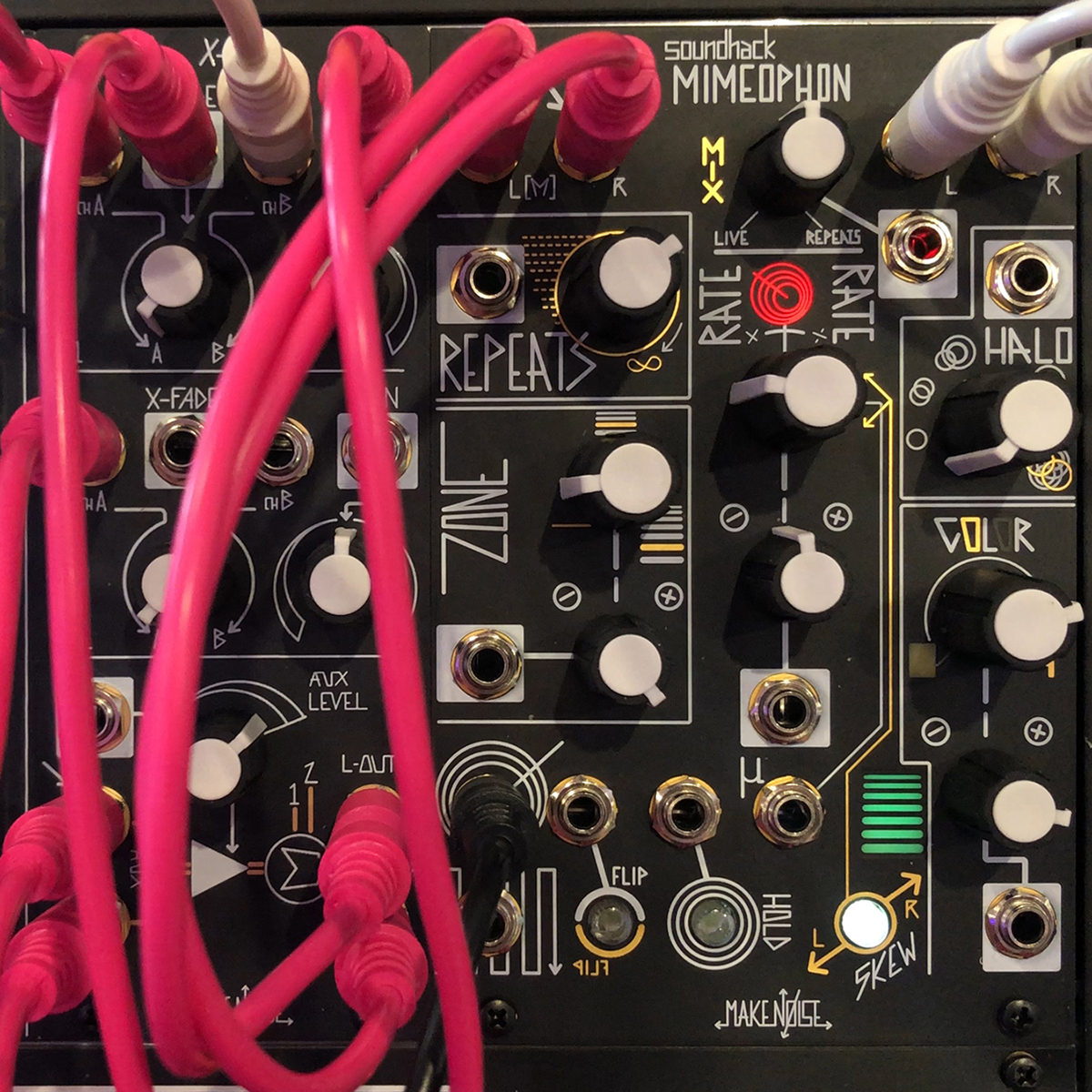
Seemingly a relative to the brand's previous delay module Echophon, Mimeophon packs a few more interesting features up its sleeve, so let's try to break down what Make Noise’s colorful description really means. Mimeophon is entirely stereo, which is the first thing that sets it apart from the monophonic Echophon. Multi-zone stands for an ingenious approach to dividing the total time of the delay buffer into definable sections with the Zone control, that can range from microsonic Karplus-Strong territory to loop sized chunks of repeatable audio. An important feature to note here is while altering the Rate control has a tape-like effect on the pitch of the sound, changing the Zone parameter modifies delay time without any effect on the pitch. The overall character of the processed sound is defined by the dynamic interaction between three linked parameters: Color, Repeats, and Halo. Repeats controls the amount of repeats of the delayed signal, while Color applies filtering to the signal and Halo blurs the lines between signal repetitions, creating a "smearing" effect. Another interesting parameter to note here is the Skew button, which adds some difference to the delay rate of the signal between left and right output channels. This fetches an extra level of polyrhythmic complexity with a single push of a button.
ALM
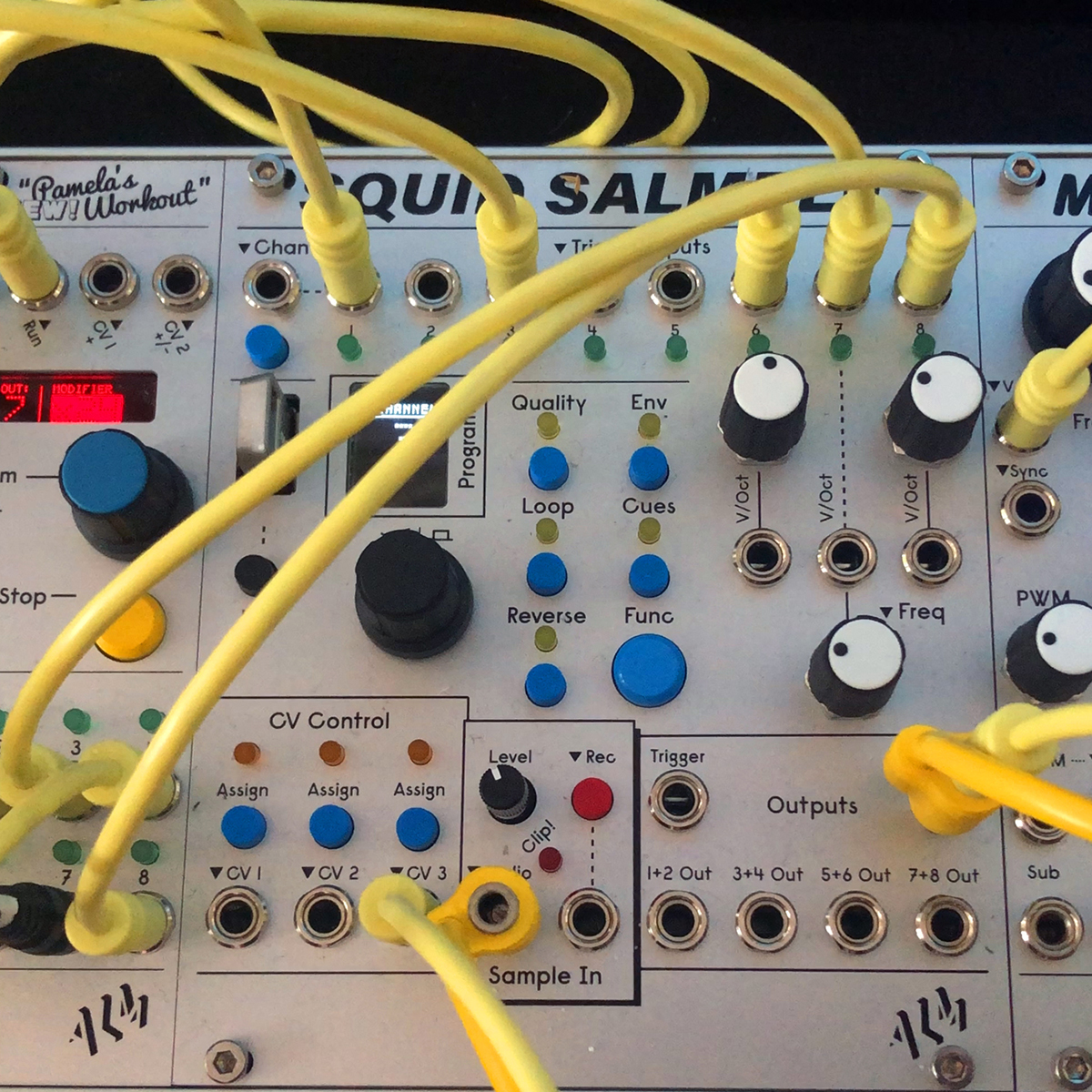
ALM continues a long legacy of excellence this year with the unveiling of three new products. The first is the ALM Squid Salmple, a spectacularly novel entry; the Salmple takes its focus towards "instinctive operation" so that the artist can spend minimal time staring at the module's screen and more time listening. The Squid utilizes a 1-in, 4-out design aesthetic that lets you record in audio or CV into the module. Chop mangle and squelch to your heart's content, and then assign your sound to one of Squid's eight channels! The module also boasts 11 seconds of delay time for each channel as well as a save and load system that uses USB for easy integration of extant sample libraries and storage of new ones.
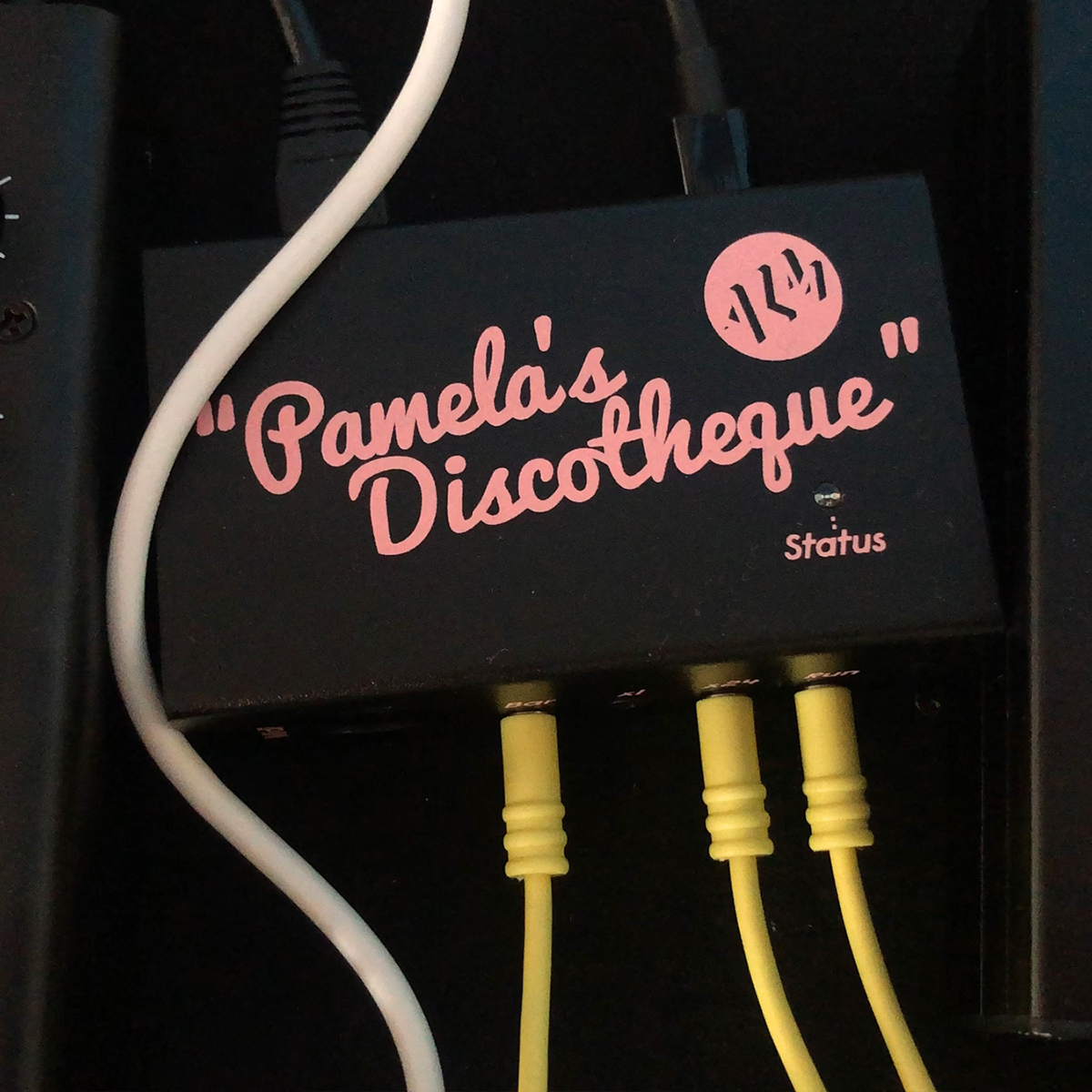
Next, we come to ALM's other introduction this year that DJ's are sure to find particularly interesting. The ALM Pamela's Discotheque allows you to generate clock from your CDJ to sync your modular system during your set! Let your Eurorack system take on an entirely new context by letting it process your tracks. Or if you're feeling like the modern day Frankie Knuckles, bolster your DJ sets with your own passages of music. ALM has hit it out of the park by positioning Pamela's Discotheque as a bridge between two sections of electronic music that don't have a dense history of interaction.
And while on the topic of intersection, we must mention ALM's other conspicuous new product: a Buchla-format adaptation of Pamela's New Workout called Pamela's 4U Workout. Joining the ranks with many new third-party Buchla format developers, ALM brings a much-loved Eurorack utility to new users, providing expanded timing and sequencing options to all those orbiting in the Buchla modular universe.
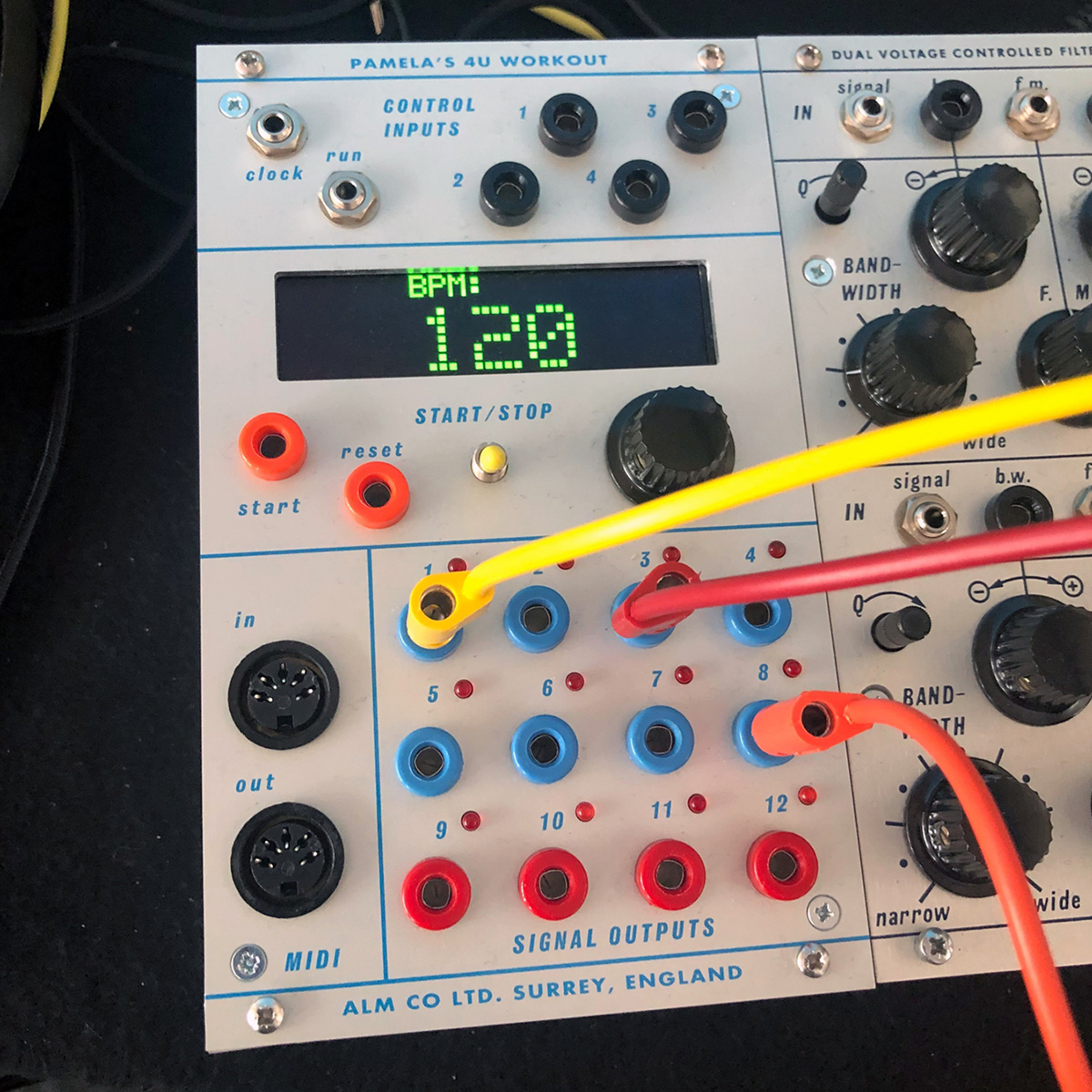
Pittsburgh Modular
Following a series of mysterious teaser videos that evoked an experience somewhere between a vintage nature documentary and Creature from the Black Lagoon, Pittsburgh Modular have announced their newest instrument: the Voltage Research Laboratory. After a look through its features, it becomes clear that the Voltage Research Laboratory is a synthesis (pardon the pun) of much of Pittsburgh's work over the past several years, integrating ideas first presented in the Lifeforms series modules and the Microvolt 3900.
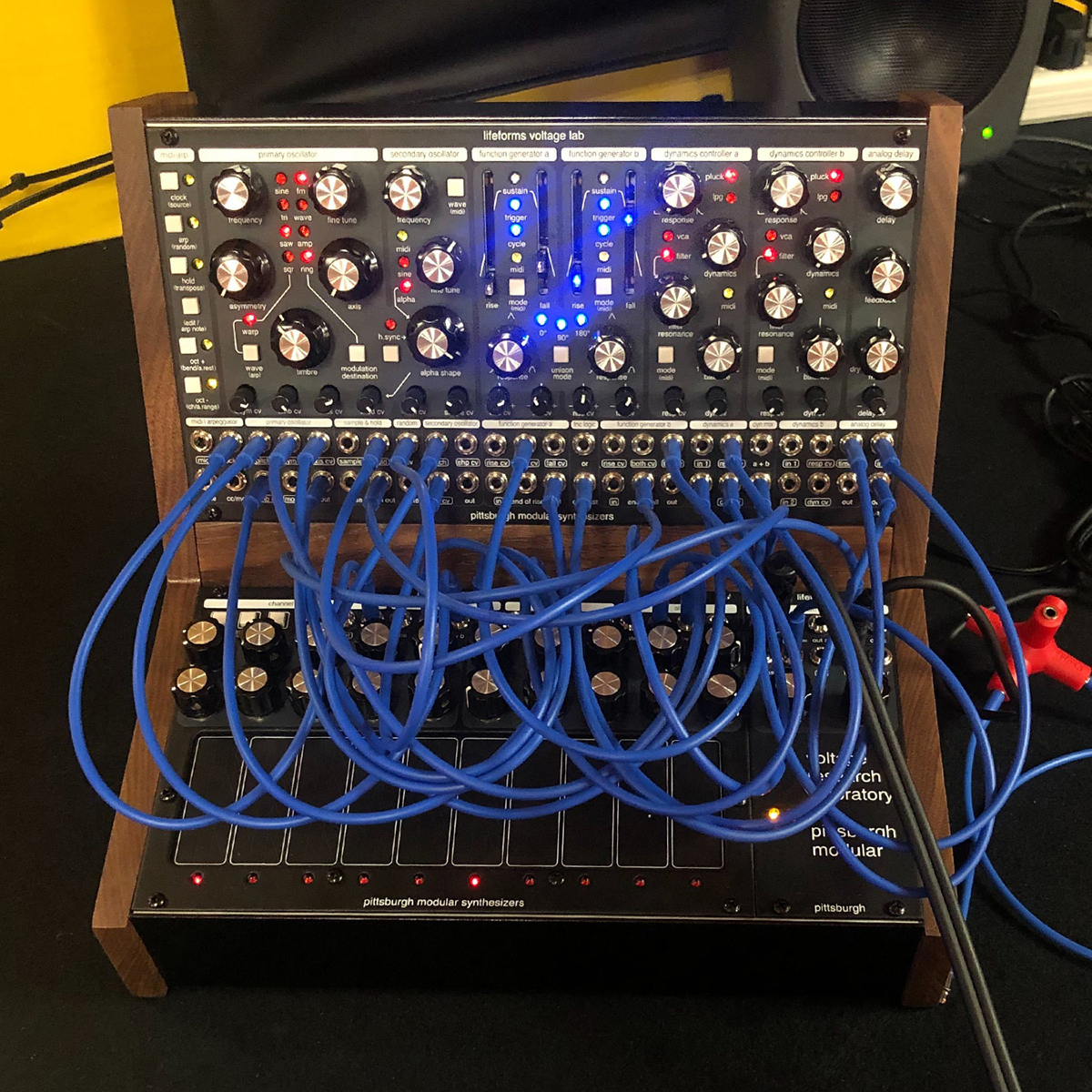
Its signal flow and layout takes obvious inspiration from the Buchla Music Easel. The Voltage Research Laboratory features an all-in-one voice module, an output management module, and a 10-key touch keyboard/sequencer with two rows of tunable voltages. The voice module bears a striking similarity to the structure of the Buchla 208, albeit with a lot of twists: a dual oscillator with special "warp" modulation and built-in options for FM, waveshape modulation, AM, and ring modulation; a dual looping function generator; two highly-customizable resonant lowpass gates, and an analog delay line. It is fully MIDI-capable, and offers internal arpeggiation along with a host of stellar CV utilities, ranging from sample and hold, a random voltage source, logic controls, and beyond.
From what we've heard so far, the Voltage Research Laboratory is a remarkably organic-sounding synth, and is clearly the most ambitious of Pittsburgh's instruments to date. It is one of our favorite announcements from Superbooth this year, and is slated to ship in September 2019. The Voltage Lab and keyboard will be available in a variety of configurations—both as Eurorack modules, or as a self-contained instrument in a handmade wooden case.
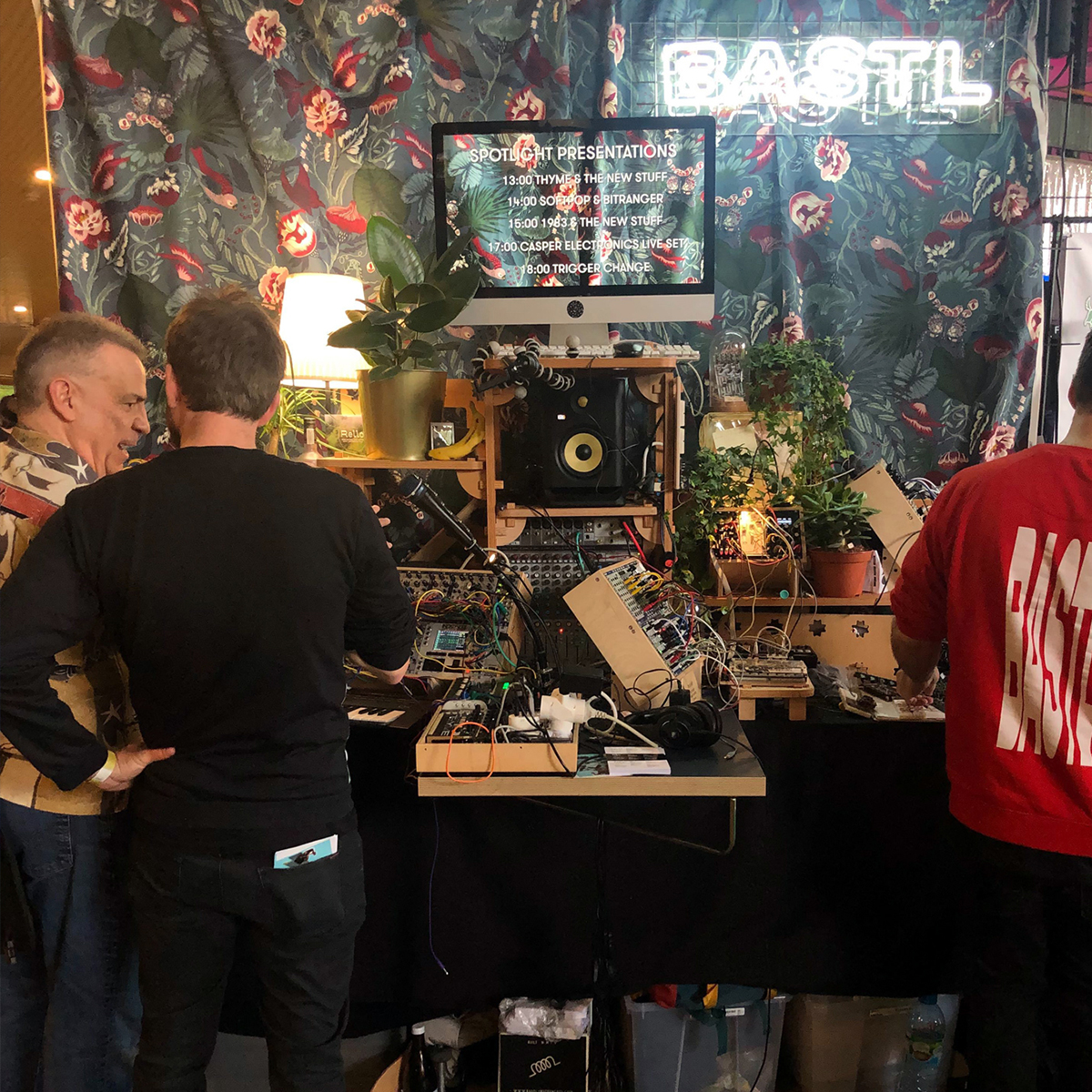
Bastl Instruments
The busy bees at Bastl brought to showcase a total of five new devices. Some of them include the updates to the previous products, like the Dude mixer with a revised enclosure, and Skis II—an improved version of the Bastl dual decay envelope + VCA module, perfect for drum synthesis.
Others are meant to be smart solutions that provide utilitarian functions in Eurorack. These include a 2HP-sized triple passive mute + multiple module called LOL, and the peculiar Illuminati—a dual USB lamp driver, controllable by MIDI or CV.
Kompas is an open-source three-channel probabilistic trigger generator based on Arduino. Developed by Stefano Manconi during his academic internship, the creation of the module is meticulously documented into a zine and is planned to be used in future workshops.
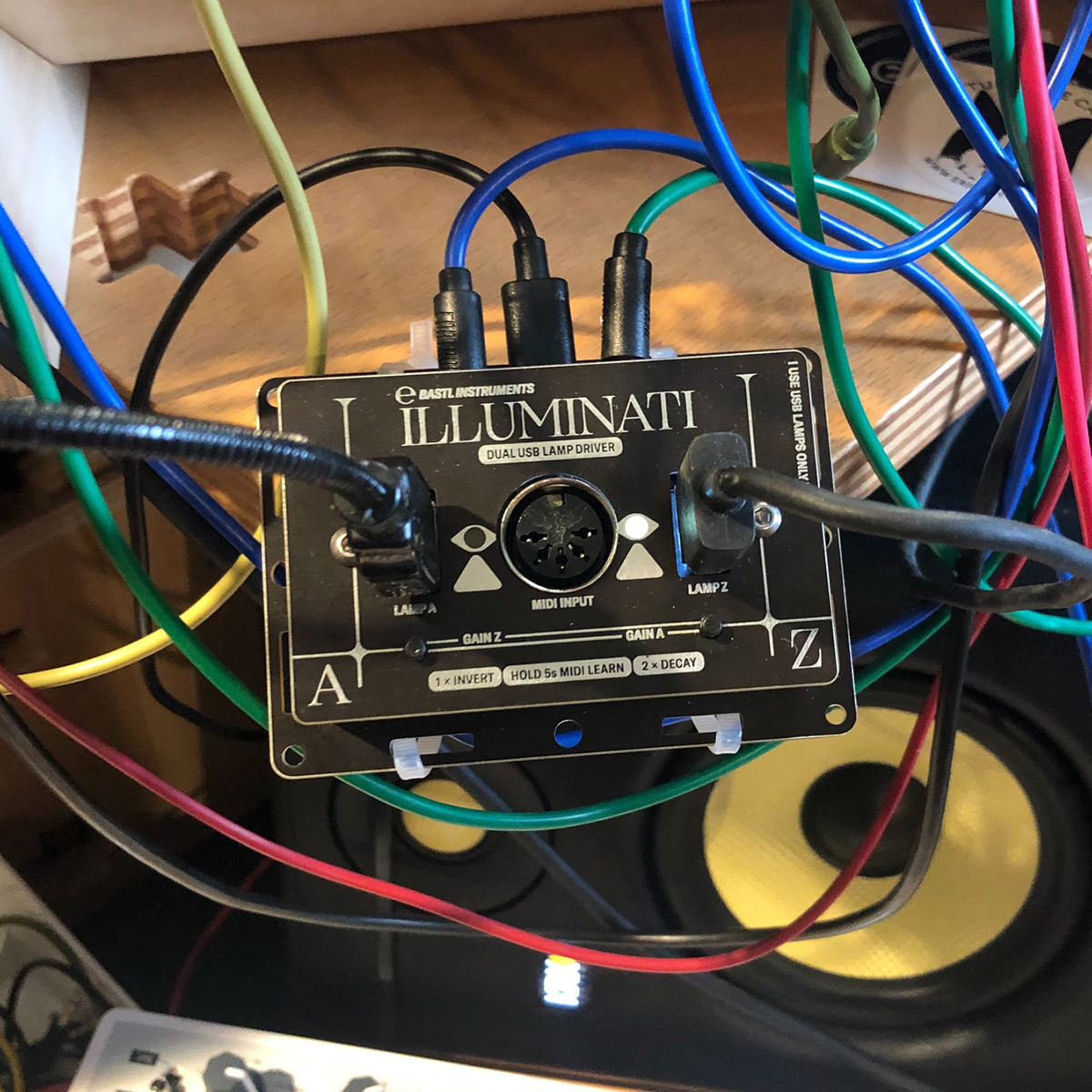
Perhaps the most interesting offering from Bastl presented at Superbooth is the circuit development platform and a performance tool OMSynth, now in Eurorack format. Unlike other devices by the manufacturer, which are mostly preconfigured to be used a certain way, ОМSynth leaves it entirely up to the user what the instrument is going to be. Equipped with a set of potentiometers, push buttons, internal speaker, a full-sized breadboards, and more the platform remains an open field for the user to build their own circuits on top of it. A set of tutorials teaching how to make oscillators, sequencers, and samplers is prepared to help the users get things going, however, the scope of what can be done with it is seemingly endless. Bastl claim that it is this platform that was used as a framework for the creation of their excellent BitRanger and Soft Pop synthesizers.
Elektron
Elektron presented the expanded version of their already-classic FM synthesizer Digitone Keys. It is pretty much exactly what it sounds like—a Digitone with an integrated 37-note velocity-sensitive keyboard with aftertouch and a traditional pitch bend/mod wheel combo. Visually reminiscent of the unforgettable layout of the Monomachine, Digitone Keys fuses nostalgia and modernity into a sturdy and powerful performance-oriented instrument. All the functionality of the original box is retained, and all the extra space in the new version is utilized to broaden the machine's sound design capabilities.
Additions include 8 assignable rotary encoders that can be used as macro-controls, simultaneously modifying sets of parameters. The multimap feature lets you split the keyboard into configurable regions capable of triggering individual sounds or whole patterns. An all-new three-octave flexible arpeggiator and portamento significantly opens up the Digitone Keys's playability. One of the most impressive add-ons is the inclusion of individual outputs per track, which is incredibly useful in both live and studio situations.
Endorphin.es
Endorphin.es brought enough new modules to showcase that could fill up a small but very powerful system. There are six new devices in total, most of which are 6hp in size, as well as a hefty new sequencer and a smallest power module on the Eurorack market.

The power module is a mere 2hp wide, and it doubles as a buffered multiple (a great way to utilize the extra space).
Godspeed+ is a mighty little oscillator module that borrows a lot from the hit module Furthrrrr Generator. Godspeed+ is equipped with a thru-zero FM-friendly Strong Zero VCO core, Autotuner, octave-shift, company’s signature wavefolder, and odd/even output with a pre-patched sub-oscillator.
Further (excuse the pun), we have a filter with arguably the best name on the market: Squawk Dirty To Me. Presented in the same 6hp format, Squawk Dirty boasts no less than 8 different filter modes: transistor ladder, diode, MS-20, vactrol, state-variable, comb, dual lo-hi pass isolator. An additional hi-pass filter is added to take out unnecessary low-end frequencies.
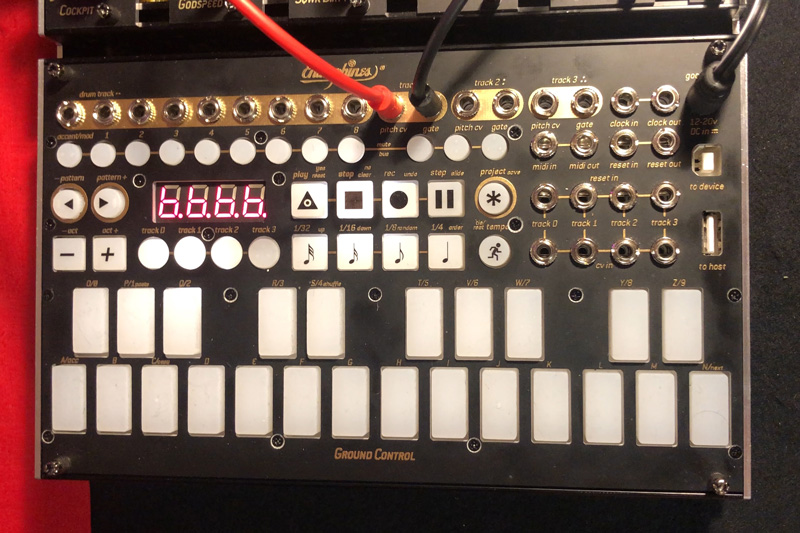
Airstreamer is a malleable digital envelope generator. It offers three possible modes of operation: attack-sustain-release (ASR), attack-decay (AD), and an option for self-cycling that can extend into audio rates. The envelope offers both unipolar and bipolar outputs, selectable end of cycle outputs, and a 1V/oct enabled input. Additionally, Airstreamer features a thru-zero VCA input that reverses the envelope when negative voltage is applied.
We suspect that the next module will wind up in rather a lot of Eurorack systems. Milky Way is a 6hp stereo multi-FX module. Currently it is equipped with the familiar Airwaves and Darkwaves packs, but more FX packs are planned to be released in future.
Finally, we get to Ground Control—a 42hp, 8-track performance-oriented sequencer. The central part of the device is occupied by a 2-octave keyboard that is as capable of controlling your modular system, as well as other MIDI gear or DAWs in your setup via dedicated USB outputs. The sequencer is capable of handling anywhere up to 64 steps per pattern, and 24 patterns per track. The total amount of possible projects on the device is also 24. All tracks can be set to different sizes, providing an excellent foundation for creating complex rhythms. The resets can also be applied on a per-track basis. Another performance-oriented feature is an implementation of dedicated mute buttons for each of the tracks. There seem to be many more intricate details to this sequencer, that we can’t wait to discover.
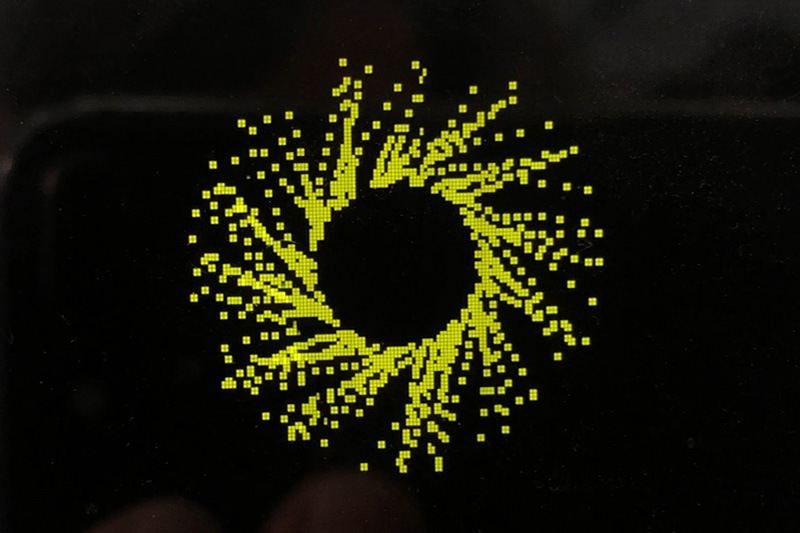
E-RM
E-RM is known as a company that helps the synthesizer community stay “in sync” with their excellent Multiclock and Midiclock+. Now the company ventures directly into the Eurorack realm with their Polygogo module—a stereo oscillator based on the polygonal synthesis method developed by E-RM themselves back in 2015. The synthesis technique relies on complex 2-dimensional amplitude shaping.
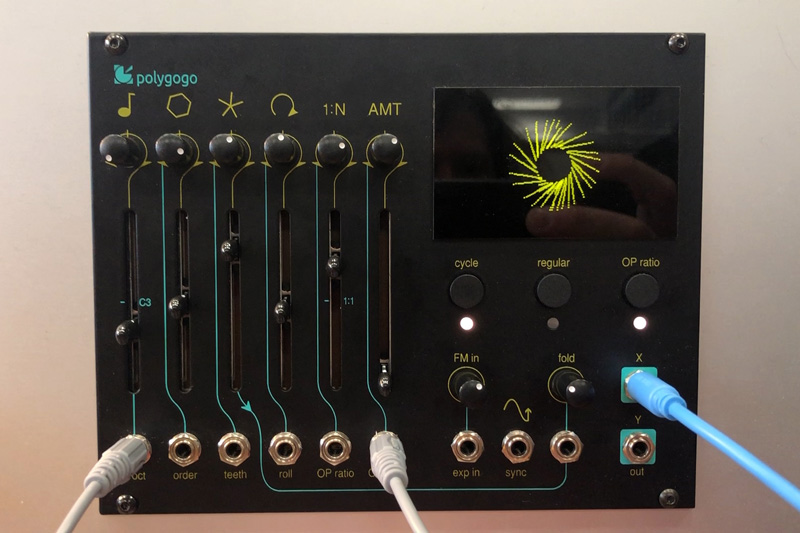
The oscillator is capable of generating a large variety of timbres, from plucky bass tones to noisy textures and drones. It has an easy-to-follow slider-per-function layout, and nine CV inputs for the ultimate controllability. Although the original design was strictly digital, the final version of the product replaced many original components with their analog counterparts: a decision made primarily to aid the overall sound of the device.
A gorgeous display provides the visual reference of the waveform shape, yet its function is not entirely aesthetic. X and Y outputs of the device are meant to be used with lasers, making it possible to project the resulting oscillator shapes. It is also worth mentioning that ex-Korg engineer and synthesizer mastermind Tatsuya Takahashi was also involved in the design of Polygogo.
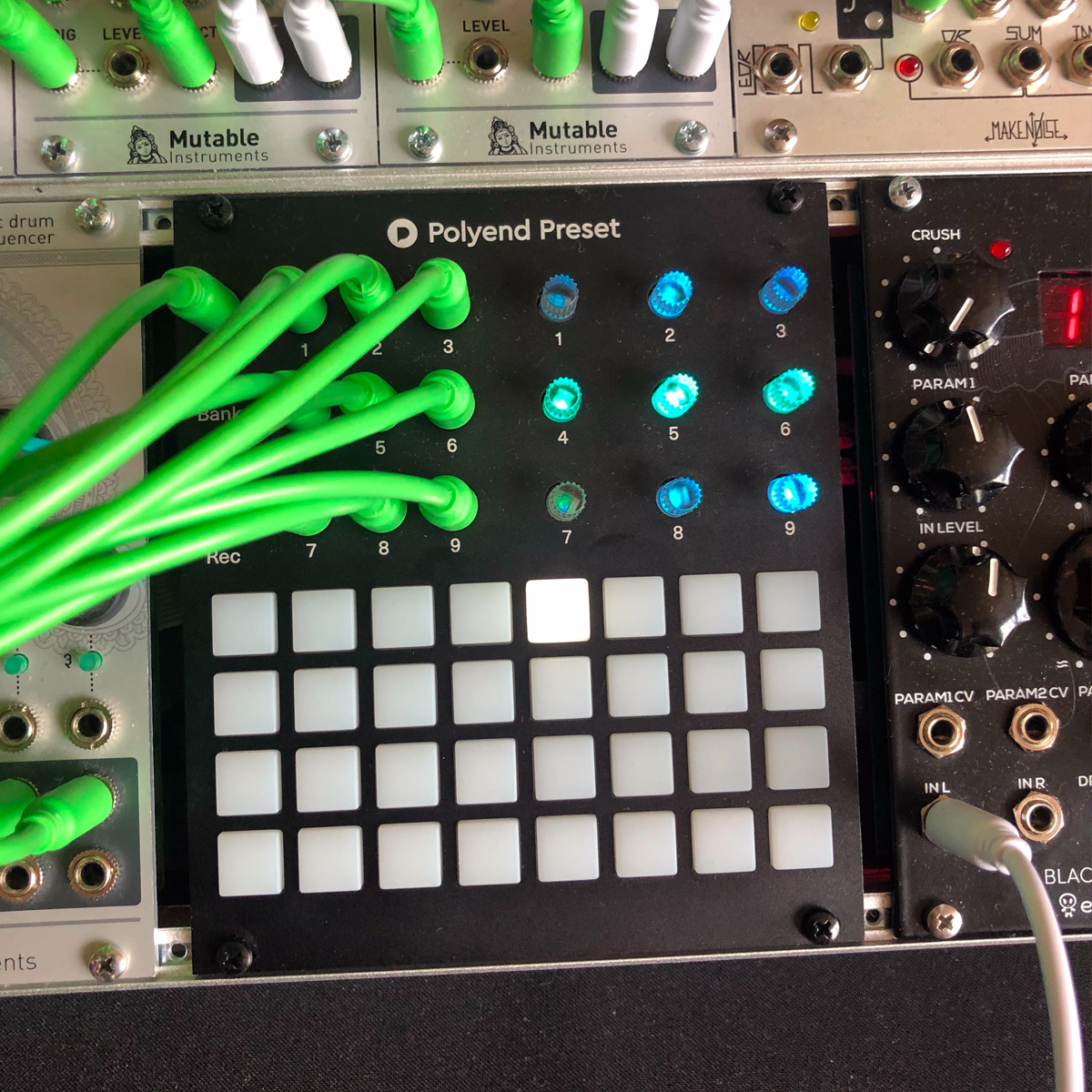
Polyend
Polyend brought the heat this year with two new modules and an update of their beloved Poly. The Poly 2 features a reduced format, ditching the 5-pin DIN MIDI port for a more spatially-efficient 3.5mm TRS option. Polyend also integrated a beautiful OLED display, a small tweak that has huge implications in terms of the Poly 2's workflow. To cap it all off, the Poly 2 features a brilliant Smart Thru function that allows you to daisy chain multiple modules together to get more voices!
Moving onto Polyend's completely new releases, we are treated to the emergence of the Preset. Preset is an incomparable module that strives to be the hovering brain of your modular setup. Preset offers the user 32 banks of 32 presets in which parameter values can be stored. Additionally, Polyend reports that users will be able to record and save CV automation as well! This marks an exciting chapter in the Eurorack world, as Preset aims to add a new layer of replicability (or if you play your cards right, unpredictability) to your modular environment.
The last of Polyend's Superbooth announcements orbits around an interesting take on a utility module that we think any Eurorack player can appreciate. The Polyend Anywhere is a power module that can interface with any powerbank, allowing musicians absolute freedom in where they choose to make music. The Anywhere's entry into the market is very exciting, making it easier than ever to make modular music on the go—in the desert, on a boat, or simply in your own backyard.
Korg
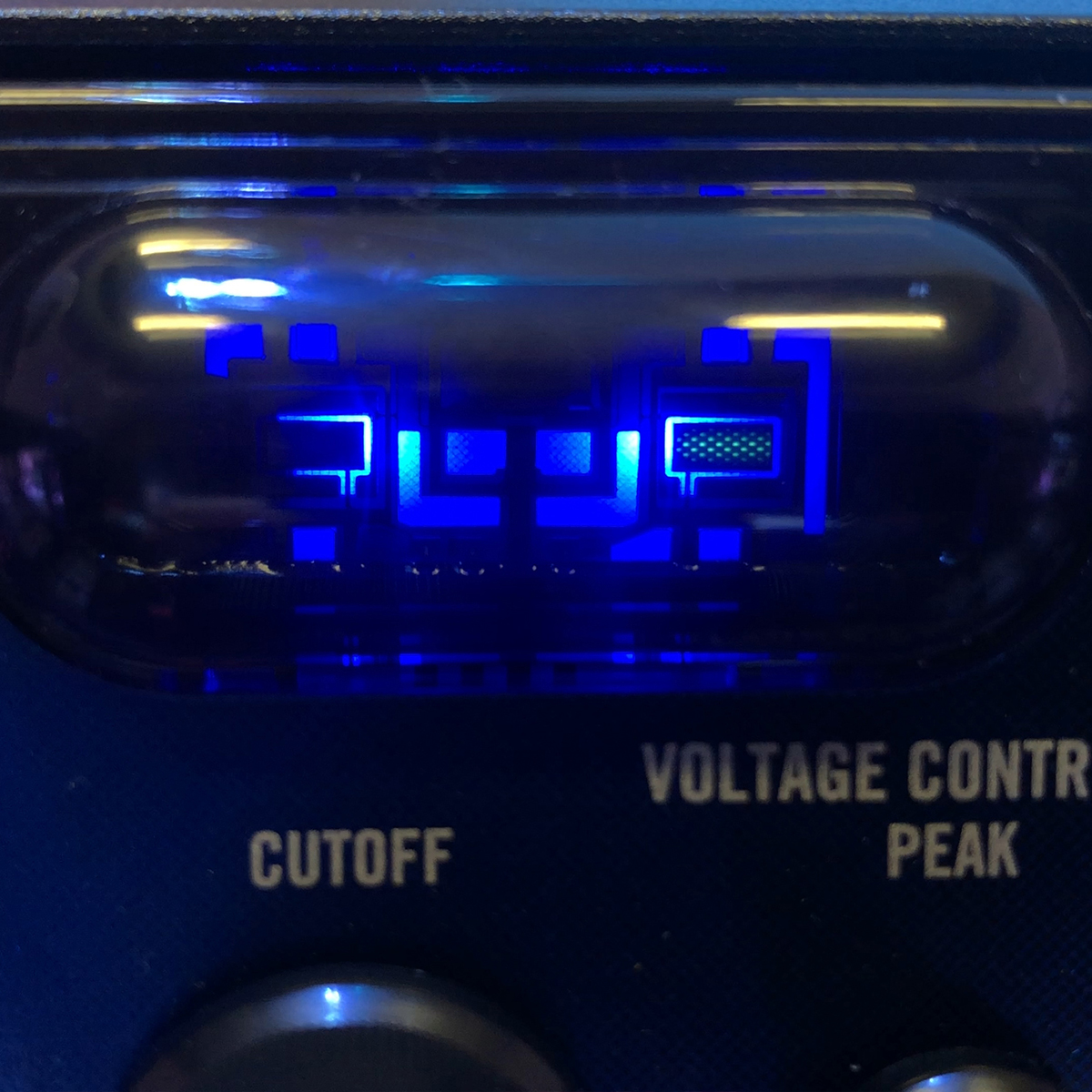 Detail of the Nubass's Nutube VFD-based distortion tube.
Detail of the Nubass's Nutube VFD-based distortion tube.
Korg adds yet another stunner into their Volca series, with the Volca Nubass. The Nubass is an analog bass machine with flair under the hood thanks to its utilization of Korg's Nutube technology—a small, easily drivable vacuum tube that provides unique warmth and saturation to any sound. The Korg Nubass features two of these tubes: the first is incorporated into the oscillator to give rich texture to the initial sound, while the second is located in the drive circuit for the sub-oscillator, providing a beautiful and thick foundation to layer with your main tone. The Nubass also features a beautiful transistor ladder filter that is perfect for rounded bass sounds.
Another expected addition to Korg's family of pocket-sized synthesizers is the new NTS Digital Synth. The synthesizer follows an already familiar monotron format, although DSP driven it borrows a lot of its functionality from the development of its much bigger and pricier sibling Korg Prologue. Unlike the simple analog architecture of the Monotron, NTS Digital synth contains a lot of convenient features of the Volca series including sync I/O, audio input for external instrument processing, MIDI in, and a dedicated arpeggiator. Notably, the synthesizer comes as a DIY kit with all the parts included. Fortunately, the kit seems to be incredibly easy to assemble with no soldering necessary. This renders it to be a great DIY project for people with zero electronics background.
Korg's third offering this year is a revision of their recently-introduced Minilogue XD, this time in the form of a desktop module. By removing the keyboard, the Minilogue XD desktop module becomes a great solution for musicians who need a synth with a lot of depth, but also a high degree of portability. The new module boasts all the same functionality of its sibling, but in almost half the size—making the module a great new alternative to those who need to travel light.
Additionally, users of the keyboard version of the Minilogue XD will rejoice at the inclusion of a poly chaining option, making it possible to expand the XD's voice count to a whopping eight voices for even more lush, complex soundscapes.
Novation
Novation makes their play this year as well, and while they may only have brought one synthesizer to the party, it’s an impressive one. The Summit is a beautiful elaboration and iteration on their previous synth the Peak.
The Summit doubles down on the Peak’s remarkable features. Offering sixteen voices powered by their New Oxford Oscillators, the Summit provides a colossal sound that is sure to impress even the most ardent analog purist. Thanks to the flexibility of the NCO, The Summit is capable of everything from standard subtractive to wavetable synthesis. All this power is baked together by a lush analog multimode filter that melds each sound into as monolithic a mountain as its name would suggest.
It is also important to note that because the Summit is bi-timbral, it is capable of hyper-complex sound design that allows the Summit to be a workhorse in the studio and on stage.
Rossum Electro-Music
The Rossum Linnaeus is an unexpected but welcome addition to an onslaught of new products from Rossum in 2019. Following the Trident analog triple oscillator and Panharmonium spectral resynthesizer, Linnaeus is an analog, true stereo filter with built-in modulation oscillator and thru-zero FM capabilities.
Each of Linnaeus's filters is continuously state-variable, offering filter type morphing via manual control and incoming CV. It tracks 1V/Oct over its enormous range, from subsonic to ultrasonic, and can be modulated both by external sources or its own internal modulation oscillator.
The modulation oscillator itself provides continuously variable waveshape; its frequency can be modulated via external CV sources or it can track the filter frequency, making it easy to dial in intense melodic filter FM sounds and more.
Like all Rossum offerings, Linnaeus is incredibly well-thought-out and offers a huge range of options for internal and external modulation. It'll no doubt pair well with the Trident analog oscillator or the stereo-oriented Panharmonium.
This Is Not Rocket Science (TINRS)
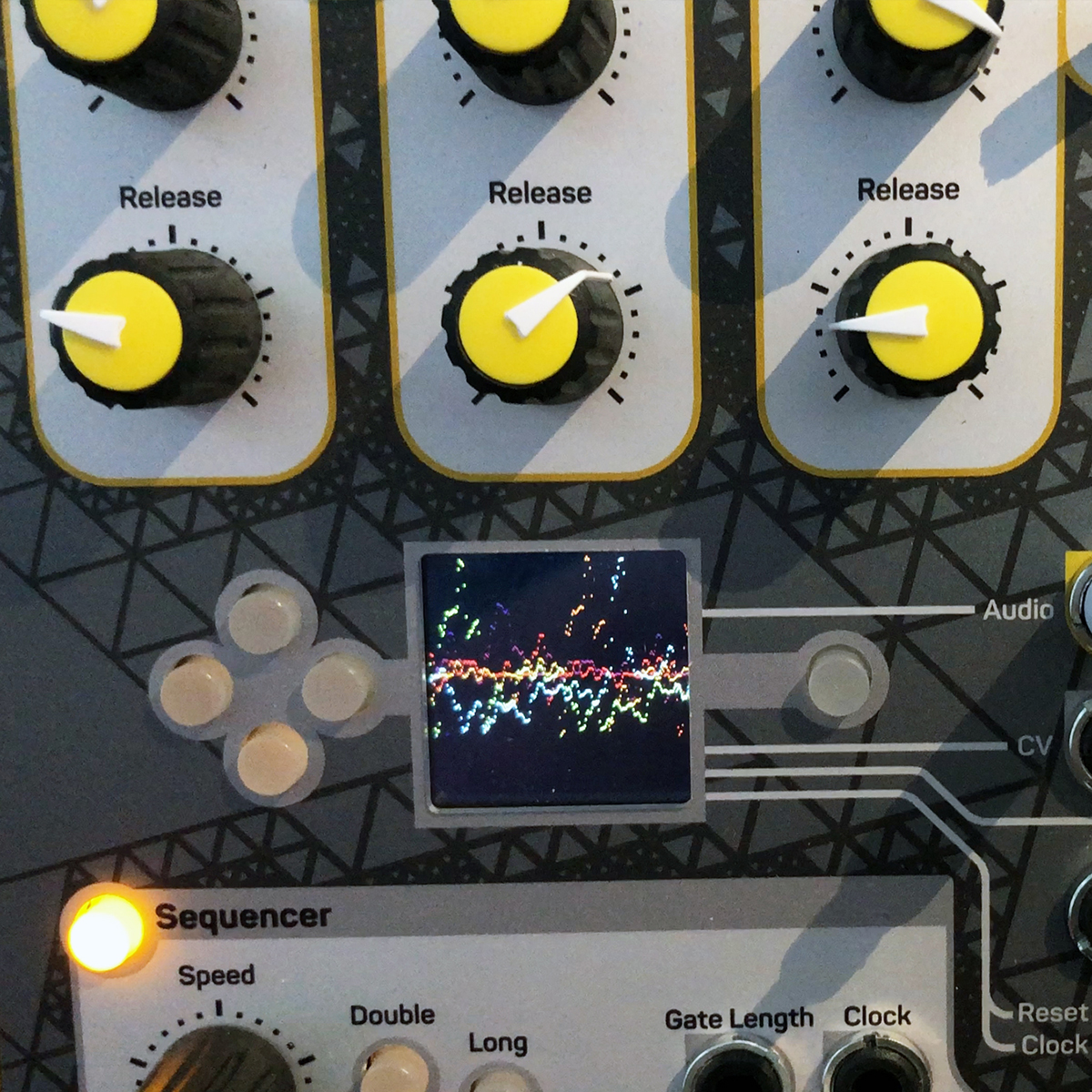
The people at This Is Not Rocket Science (TINRS) have crashed into Superbooth this year with their Fenix IV Modular Synthesizer ecosystem. Working closely with the people over at Syntonovo, The Fenix IV revives the famous formatting style developed originally by Synton that employs color-coding, as well as a left to right and top to bottom design schema. This was developed in an attempt to create a "flow"-like ecosystem for the instrumentalist to exist and learn in. In this respect, TINRS is trying to create a singular instrument that the artist has to grow with.
Details on the specific functions of each module are still forthcoming, but one can surmise the implications of the full Fenix IV system as the unit appears to be in a deep conversation with its Synton siblings. Like the preceding three Fenix instruments, the IV focuses on breaking new ground rather than emulating its ancestors—this time providing a powerful combination of analog and digital features sure to provide more than a lifetime's worth of exploration. A chord oscillator, digital delay, LPG, Wave Multiplier, a gnarly visual display, and much more promise to place the Fenix IV in the same tier of esteem as its predecessors.
Syntonovo
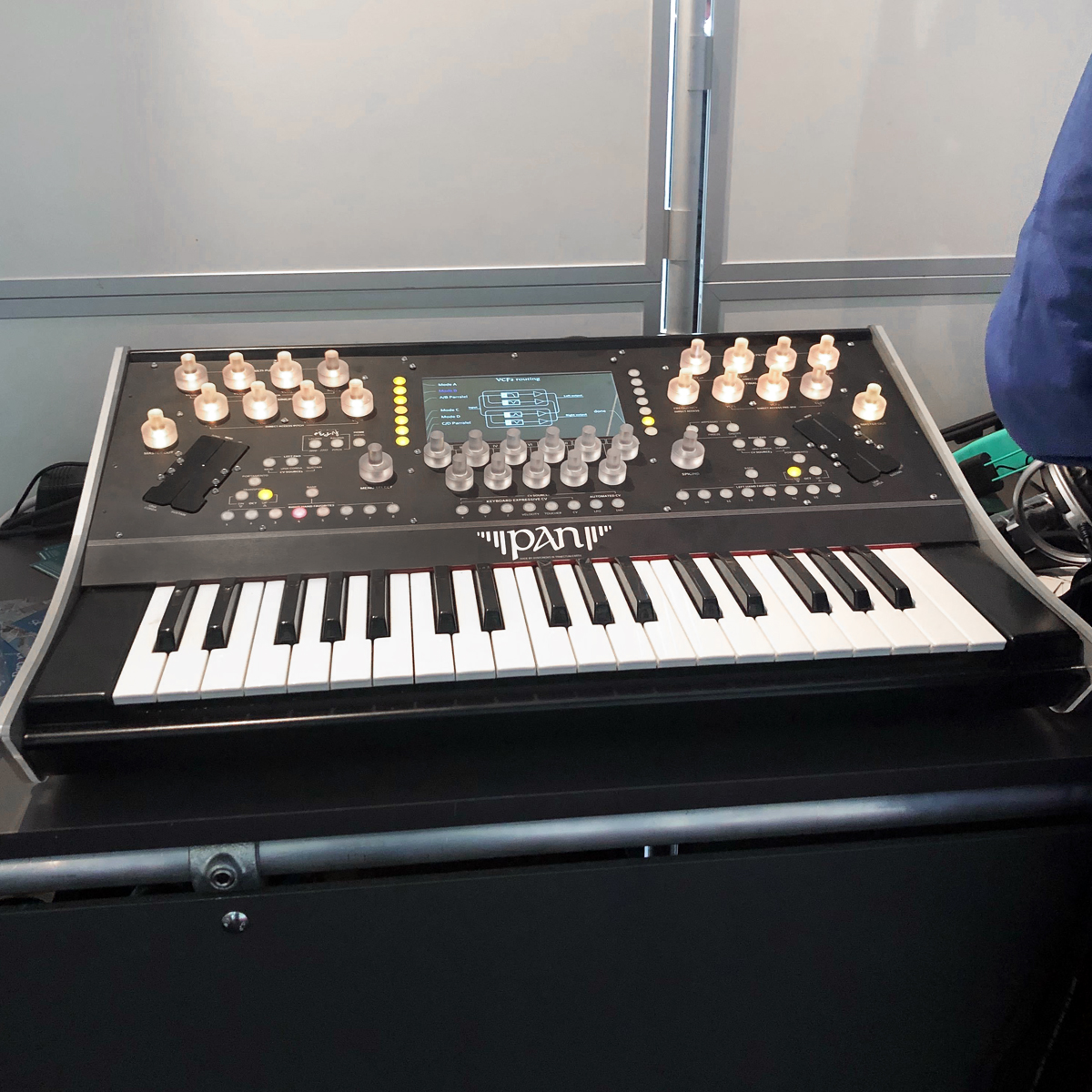
Speaking of Syntonovo, the Pan is here!
Pan was shown at Superbooth last year, but this time it boasts a completely redesigned front panel, as well as some functional upgrades. The Syntonovo Pan is an analog monophonic synthesizer that features very rich and detailed modulation. What sets Pan apart is its focus on modulation through the keyboard rather than strictly relying on patching or knob turning. This gives the instrument MPE functionality as well as a deep synthesis capability, making the release of this synthesizer a hotly anticipated event!. As lovers of the Synton Syrinx and all revisions of the Fenix, we eagerly anticipate finding out what a 21st century Synton synthesizer will be like. These sightings are a huge treat and we're excited to see what the future holds!
Industrial Music Electronics
Industrial Music Electronics (formerly known as The Harvestman) have brought along their eagerly-anticipated Andore Jr and Bionic Lester Mk3. Andore Jr has shown up a handful of times before, even in our own video of Scott Jaeger's demonstration of the Hertz Donut Mk3.
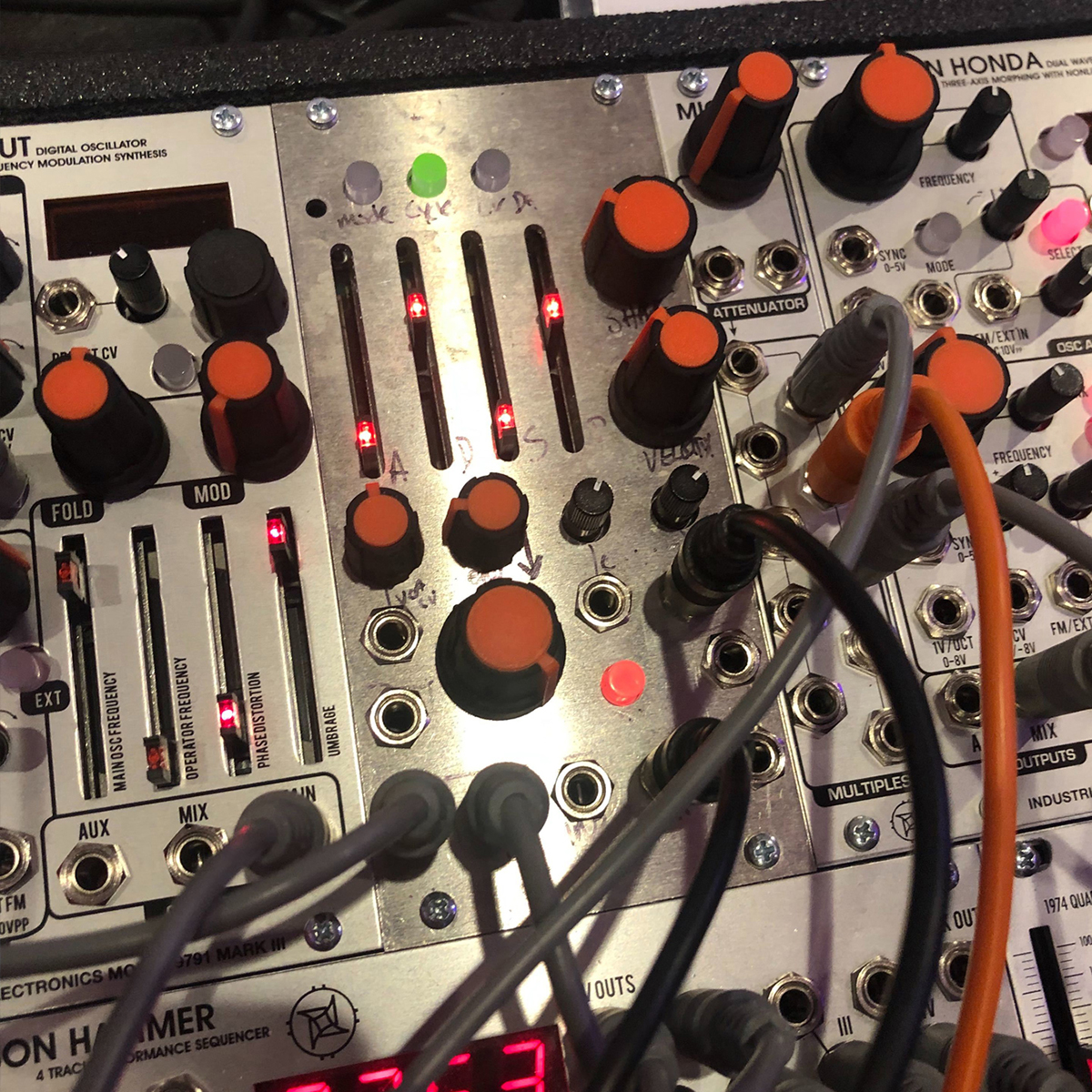
The Bionic Lester first reared its colorfully-paneled head at the first annual Synthplex. Like the other Mk3 modules (Piston Honda and Hertz Donut), the Bionic Lester now offers an integrated preset management system complete with voltage control, working further and further toward a fully preset-capable IME Eurorack system. What's more, IME has announced the impending release of Kermit Mk3 and Malgorithm Mk3, promising to create a system rife with potential for controlled chaos, beautiful drones, and more.
We're beyond excited to see exactly what all of these preset capabilities mean when spread across the entire system—the Hertz Donut and Piston Honda Mk3 alone have proven to provide completely new patching styles, so it's easy to imagine that Bionic Lester and friends will be equally revelatory in their own time.
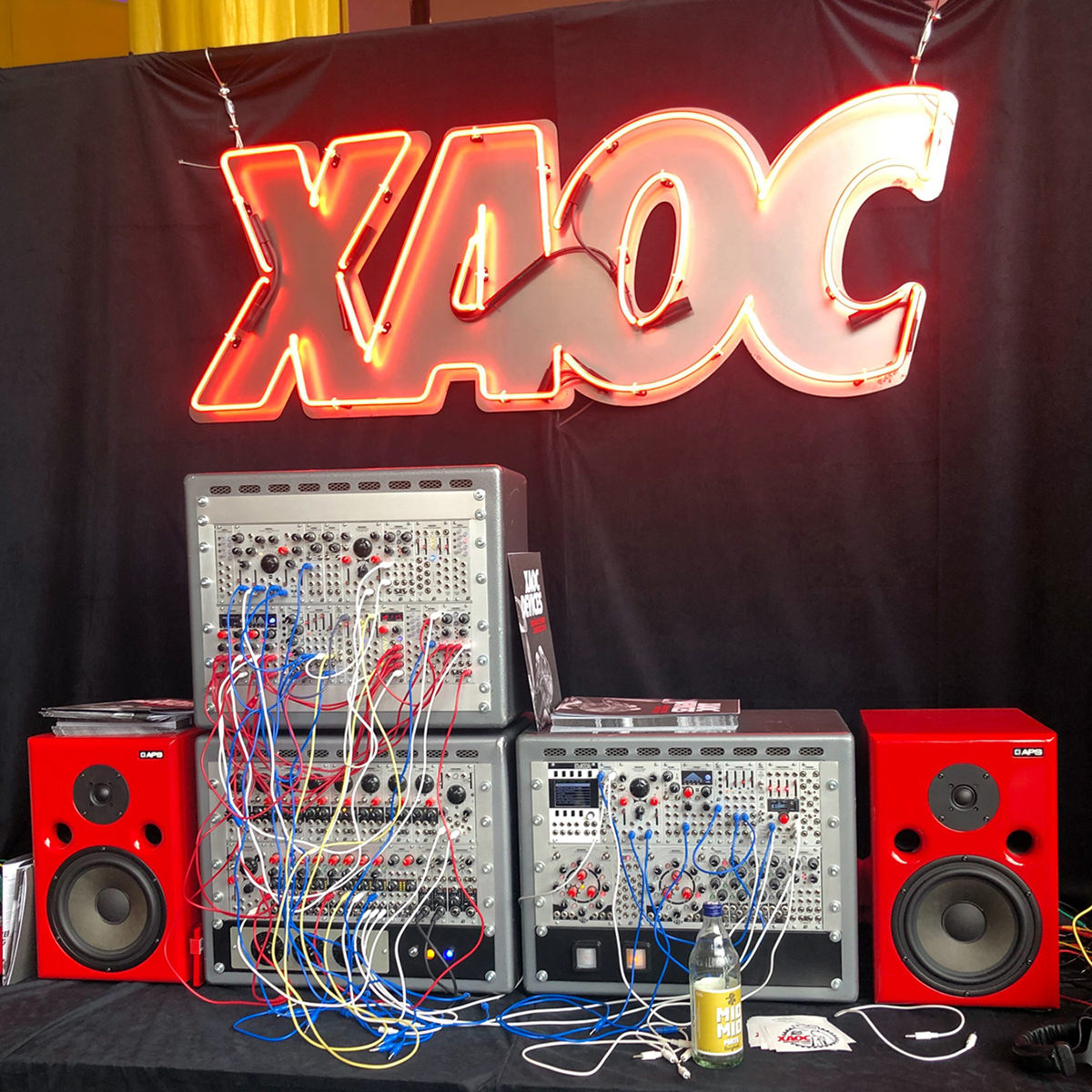
Xaoc Devices
Xaoc Devices has been busy—they brought several new products this year, as well as the eagerly-anticipated Odessa additive oscillator.
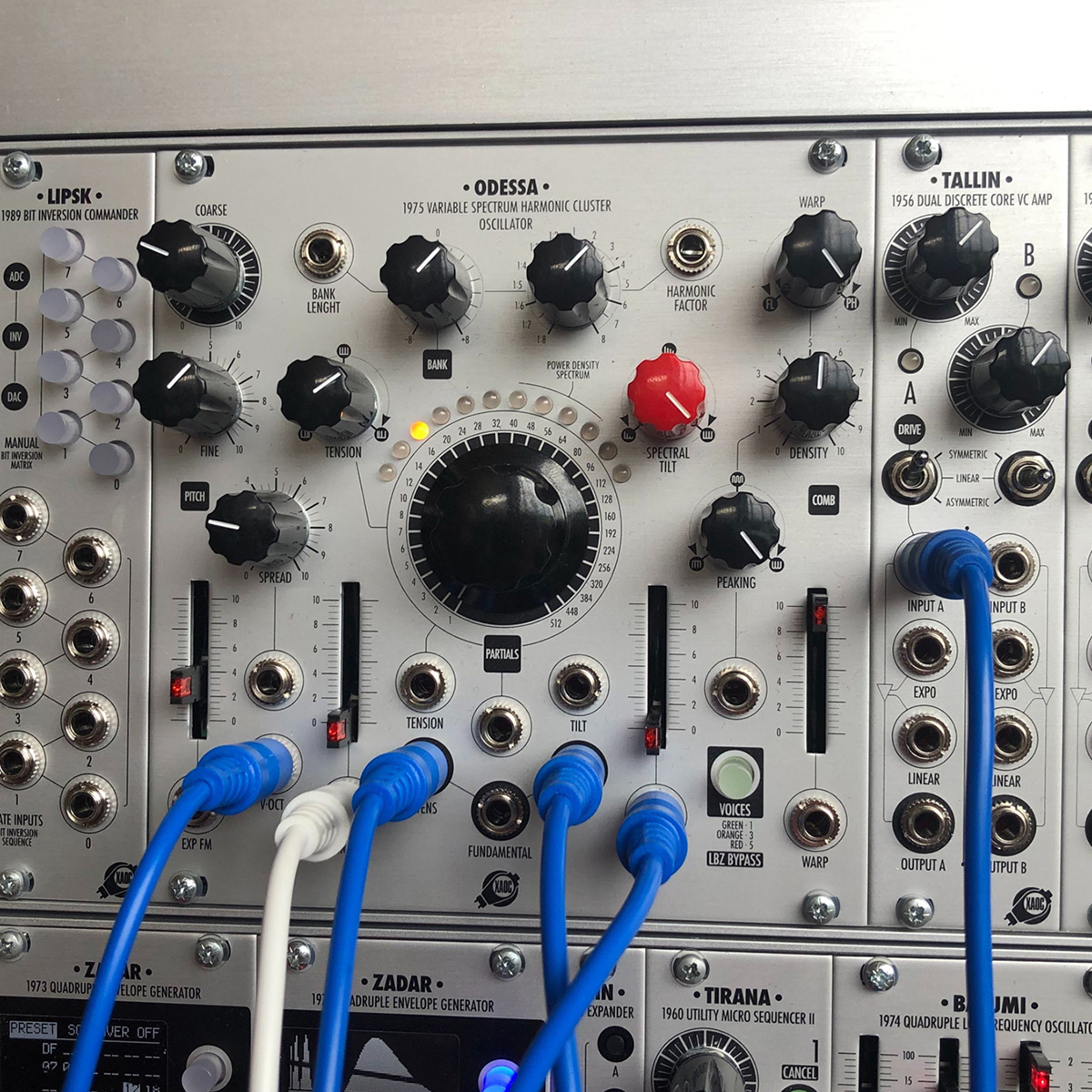
Odessa has been the subject of much talk over the past year, promising to bring vast new avenues of sound creation to Eurorack synths: FPGA-enabled generation of remarkably complex waveforms through means previously difficult to accomplish with individual oscillators. It is exciting to see its development continue, and we eagerly await the day that it makes it into the public's hands—no doubt the overall soundscape of Eurorack synthesis will change quite suddenly. But that isn't the only thing turning heads at the Xaoc booth—they have also introduced three new modules: Sarajewo, Timiszoara, and Jena.
Sarajewo is a remarkable accomplishment—a BBD-based analog delay capable of tap tempo and syncing to external clock sources...a feature conspicuously absent from the majority of BBD delays to date. It provides multiple delay taps, an external feedback loop, overall single-slider tone control, and plenty of voltage control, promising an uncommon level of flexibility from a BBD module.
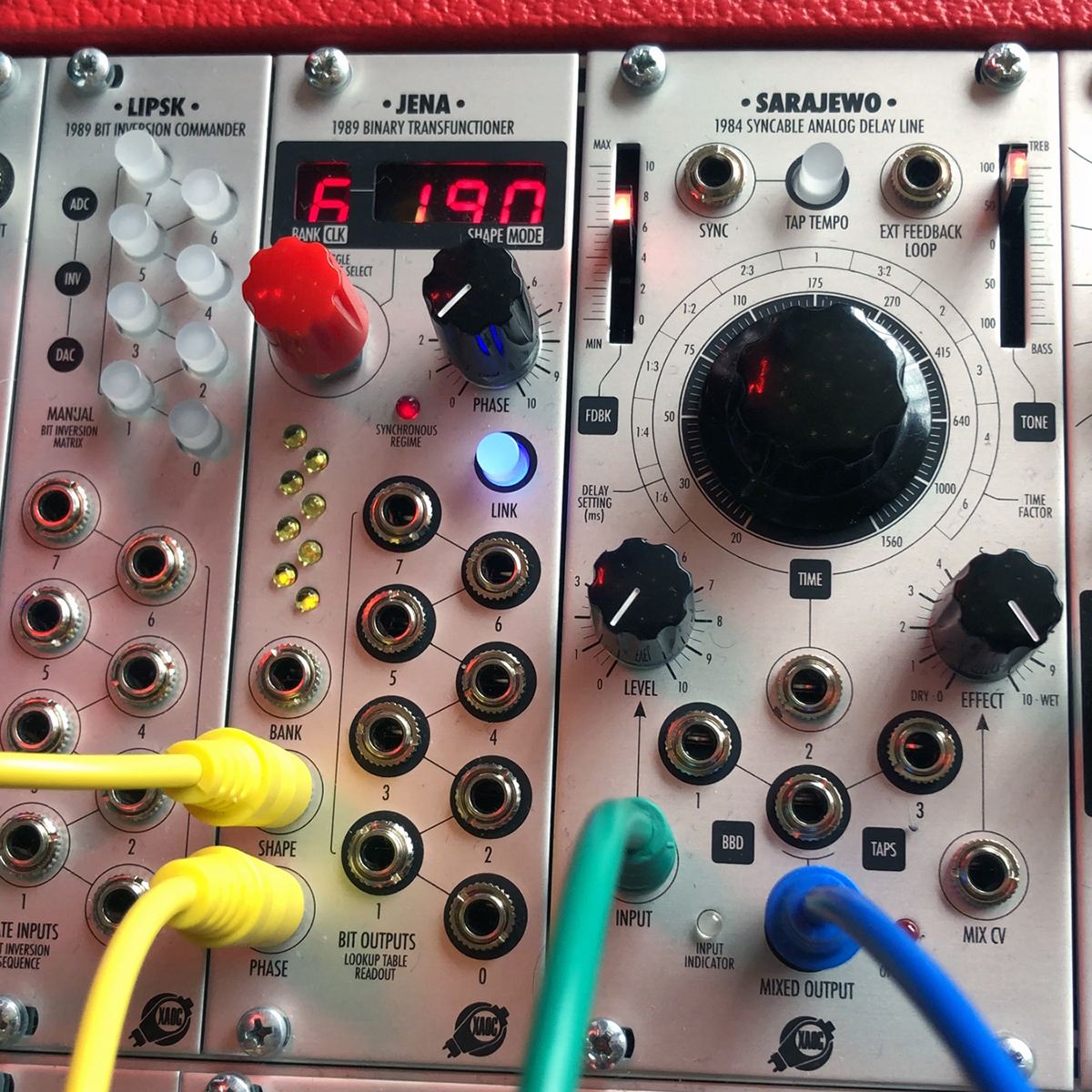
Timiszoara is a voltage-controlled DSP module based on the Spin FV1. It hosts its various algorithms on a MicroSD card, enabling the addition of new algorithms and even user-created effects. Each algorithm provides three voltage-controllable parameters and a voltage-controllable wet/dry mix, and the module as a whole offers voltage and gate control of algorithm selection, making it easily possible to switch effects in real time.
Finally, Jena is an addition to the ongoing Leibniz Subsystem, alongside prior releases Drezno and Lipsk. Described by XAOC as a Binary Transfunctioner, Jena is a transfer function module that translates incoming CV into indices for stored 8-bit values. This makes possible a huge array of behaviors from 8-channel gate generation to wavetable synthesis and even Walsh additive synthesis—a host of techniques previously quite uncommon in Eurorack and hardware synths in general.
Gamechanger Audio
Gamechanger has come to Superbooth with a synthesizer that truly lives up to the company's name—Motor Synth! Motor Synth takes its sound source from an entirely novel approach of using eight electromotors, each finely tuned and able to hit ultra-precise RPM. This allows the synthesizer to create precise note values through electromechanical means.
The Motor Synth also boasts a second sound source of specially designed reflective optical disks that are attached to the shafts of each motor. Each of these disks has a wave shape printed on it, so as the motor spins the disks turn as well. They are then read by a set of infrared sensors that convert these patterns into a usable audio signal! Gamechanger have outdone themselves this year with the Motor Synth, as we have never seen a synthesis model quite like this before!
Landscape
Landscape brought their new revision of the HC-TT (Human Controlled Tape Transport) to Superbooth this year, with the HC-TT 2. The revision boasts a friendlier user interface and some extra features which make it even easier to manipulate tapes without having to modify them! With the addition of capacitive performance features and a secondary tuning knob, Landscape have widened the breadth of their machine to staggering heights!
Humble Audio
New manufacturer Humble Audio is at Superbooth with their FM oscillator bank, the Quad Operator. A fascinating module that looks towards the matrix FM model of synthesis for inspiration. Co-signed by the likes of Richard Devine, an many other synthesists. Quad Operator seems aimed at providing a more intuitive means of visualizing and controlling digital FM, the notoriously difficult-to-program style of synthesis implemented first in Yamaha's DX series in the 1980s. With its much more intuitive interface, though, the Quad Operator seems to be the perfect solution for musicians who are looking to make complex FM sounds in a smaller Eurorack format.
Humble Audio is also featuring the Algo Expander module, an expansion module for the Quad Operator that provides save and recall as well as a cross fading function that unlocks morphing patches and sounds.
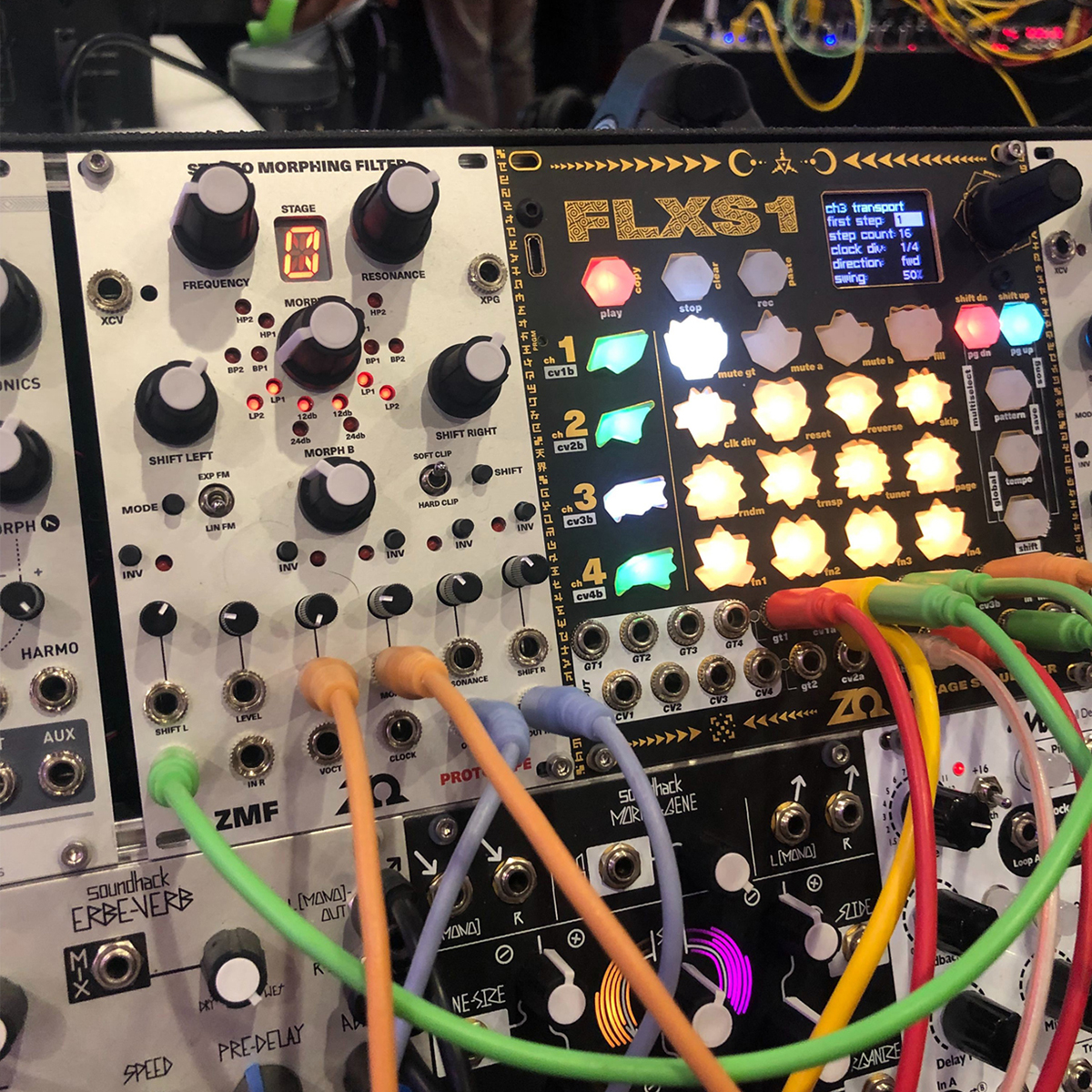
Zetaohm
Zetaohm has returned, following up the beloved FLXS1 with the new ZMF Zetaohm Morphing Filter! The ZMF is a monster of a filter, utilizing a feature set that includes four state variable filters, two for the left channel and two for the right, they can be organized in serial, or parallel. These features allow for a humongous amount of depth already, but the ZMF takes itself further with the addition of continuous morphing between filter states, as well as linear and exponential FM.
It seems Zetaohm is on the same train as Make Noise's QPAS, SSF Stereo Dipole, and Moog's Matriarch—stereo filters for weird binaural panning and spatial coloration. With its own unique ideas and features at work, though, ZMF has us eager to spend more time with it!
Soma Laboratory
Since the release of the Lyra-4 and Lyra-8 synthesizers, Vlad Kreimer and his company Soma Laboratory started gaining an almost cult following in the synthesizer community. There are plenty of solid reasons for this—in short, they make amazing instruments. It is safe to say that Vlad’s instruments stick out among other electronic machines on the market by not following any particular conventions of synthesizer design. This is supported by excellent built quality, as well as unique and memorable sound of the instruments they create.
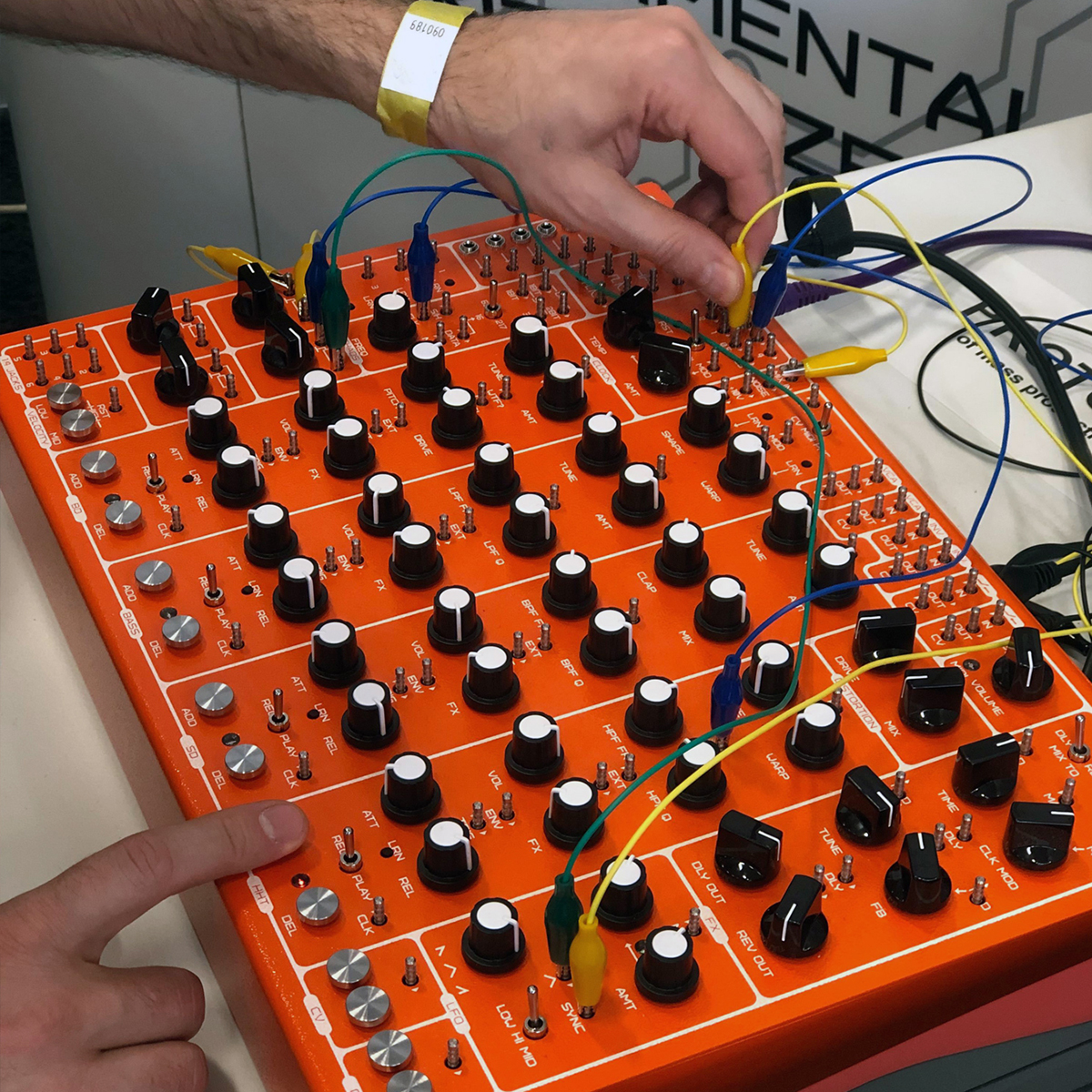
This time at Superbooth, Soma showcased a few highly-anticipated devices. Obviously, the most amount of attention gravitates towards the semi-modular drum machine Pulsar-23. Vlad describes the instrument as an organismic drum machine, a term that was previously applied to the Lyra synthesizer, thus presumably implying a perceived organic sound quality of the Pulsar-23. The core of the drum machine is comprised of 4 drum channels, 4 envelope generators, and interestingly 4 independent loopers in place where many other brands use sequencers. There is also a clock generator with plenty of dividers, a wide-range LFO, a unique pseudo-random generator called Shaos, distortion, FX processor, 2 VCAs, and 2 gate generators with CV inputs, and 2 controllable inverters. Unlike Lyra, Pulsar-23 is also MIDI-controllable, and there are more control voltage inputs for various parameters. The most peculiar aspect of the machine is the choice of connection format for patching, which in this case is M3 screws + alligator clips. Vlad claims that this choice not only helps bring the cost of the instrument down, but also opens up a lot of new possibilities for patching, like connecting more than one clip to the same screw, or connecting clips directly to raw electronic parts such as capacitors, which allows for some non-destructive circuit-bending. Personally, we can’t wait to spend more time with this machine.
Another offering from Soma included Ether: a portable electromagnetic pickup, or as the company describes it, an anti-radio. This device lets you hear the electromagnetic waves surrounding our environment, and the audio out can be easily captured by portable recorders.
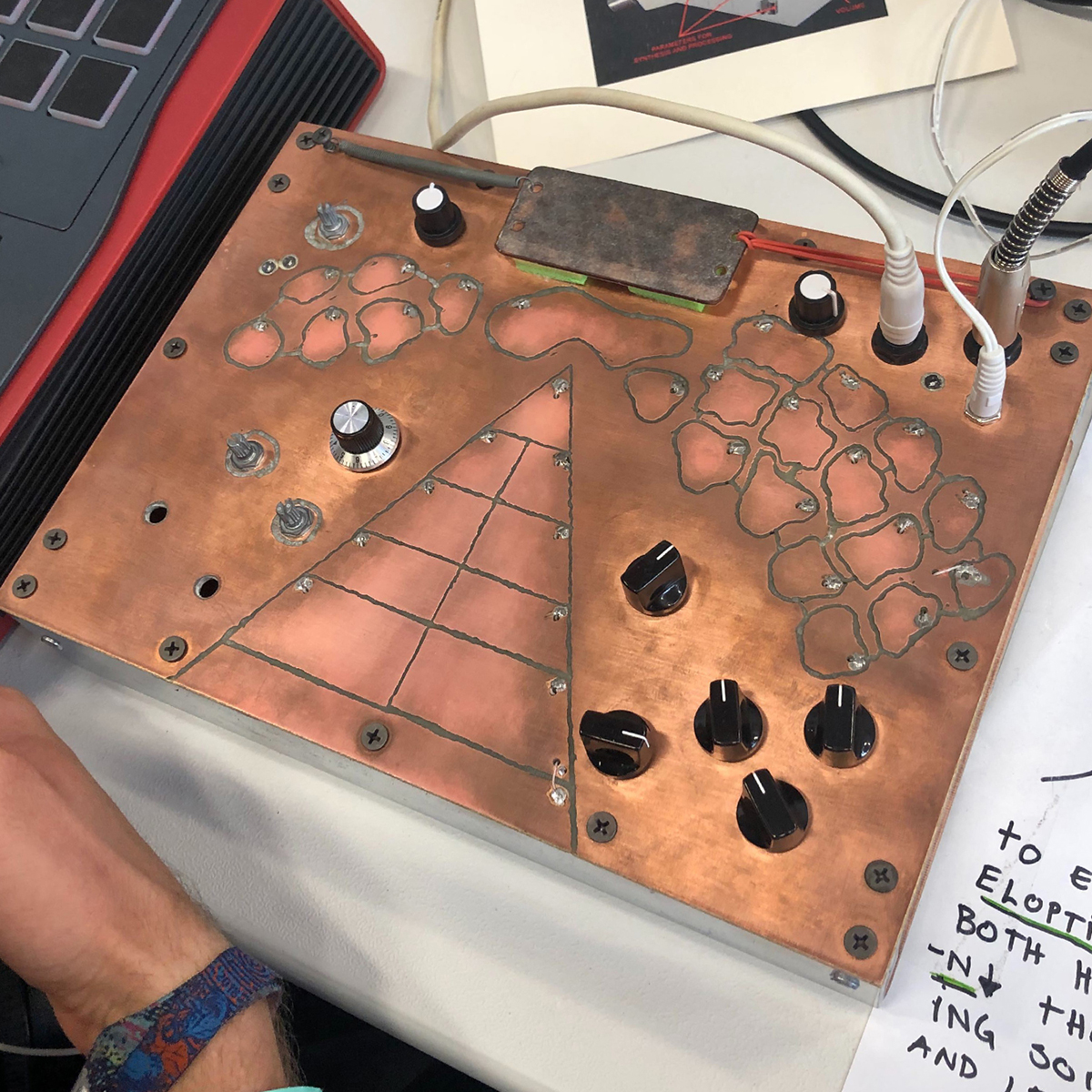
The story with Soma doesn’t end there. Vlad had yet another outlandish creation to share at the event, a steampunk-ish Enner: a synthesizer, a noise-maker, and an electro-acoustic instrument that turns the performer’s body into a mixer. A triangular shape engraved at the center of the instrument represents an array of filters as well as sound spatialization interface. The top-right is occupied by tone generators, and the top-left is dedicated to rhythmic pulses. There is also a spring stretched across the upper part of the instrument that serves as the electro-acoustic element. The performance on this instrument involves using your fingers to create connections. Although currently the nature of the instrument is mostly experimental, Vlad noted that there are plans to make a polyphonic, MIDI-enabled version of the instrument.
Frap Tools

Frap Tools hit Superbooth hard this year with their USTA module, a circular sequencer that appears to take inspiration from the Buchla 250e Arbitrary Function Generator. USTA is a "4x4 Tracks" sequencer that seems to entirely redefine the capabilities of the nominal sequencer module. This sequencer utilizes separate "stages" instead of steps, in which a stage can last through any length of time. This means that each track can exist completely independently from each other, as each "stage" of the sequence ceases to represent a clock impulse and now represents a ratio of time within the sequence. All this functionality (and more!) are presented in a circular interface that fully displays Frap Tools' intention of creating a sequencer that is more based on a relationship of voltages rather than a series of steps to be scanned through! The approach Frap Tools has taken here is decidedly not of the beaten path, which makes all of us excited to get our hands on it.
Soundmachines
Soundmachines brought not one, not two—but fourteen new modules: their EuroTouch series. Each module is its own independent device centered around the company's much-loved Lightstrip technology. With a Lightstrip embedded in each module, this line promises to bring tactile control to a huge range of techniques.
Modules range from CV utilities and sound processors to full-fledged sound generation devices. CV generators include the T-modulator quad LFO, T-transient, and T-quadstrip, a powerful control module featuring four lightstrip engines in only 8hp.
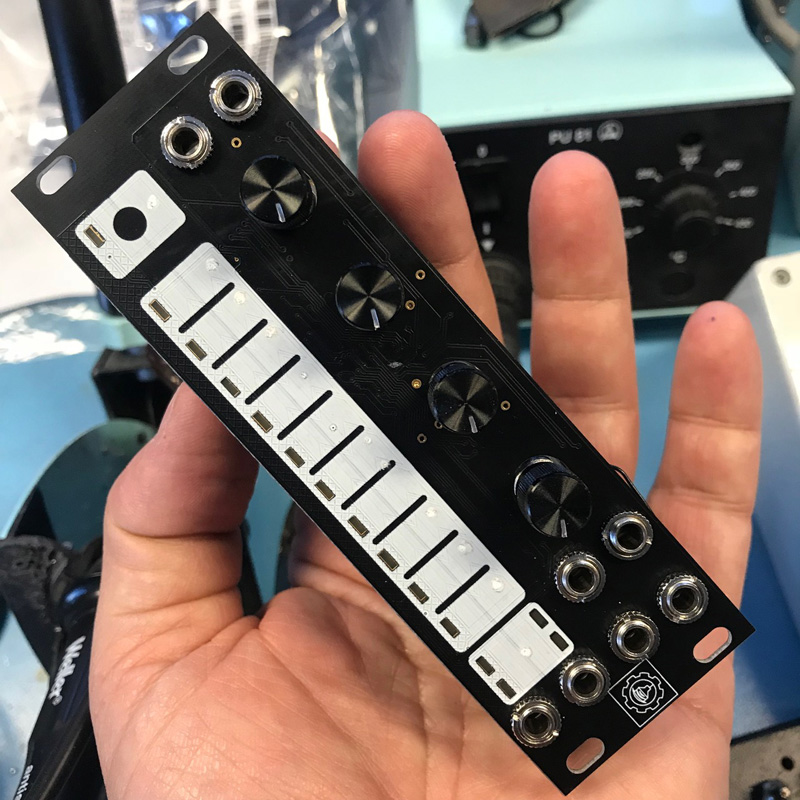
The sound processors contain a number of compelling devices. Some are as simple as VCAs or panning mixers, but the touch series also features the T-vocoder (yes, a full-fledged vocoder modules in 8hp), T-sspectrum (a stereo spectral processor), T-sslayer (a stereo multimode distortion), T-formant (a formant filter), and T-sfilter (a 12dB/oct stereo lowpass filter).
And last but not least, the sound sources themselves offer some formidable capabilities: T-generator is a Thru-Zero VCO, while T-harmonic offers harmonic oscillator functionality. Meanwhile, the T-sdrone produces stereo drones via a stack of spreadable internal oscillators, capable of everything from swarm effects to gnarly, outrageous walls of sound.
Each module is 8hp and provides tactile control of key parameters—it's clear that Soundmachines have assembled a solid platform for developing new modules while honoring their prior creations, and we're excited to see what performative possibilities these offer.
Meng Qi
For those unfamiliar, Meng Qi is a Eurorack manufacturer and electronic instrument builder from China, whose name is already highly respected among sound synthesists, and DIY’ers. He builds everything from Eurorack modules to electronic, and electro-acoustic one-of-a-kind instruments.
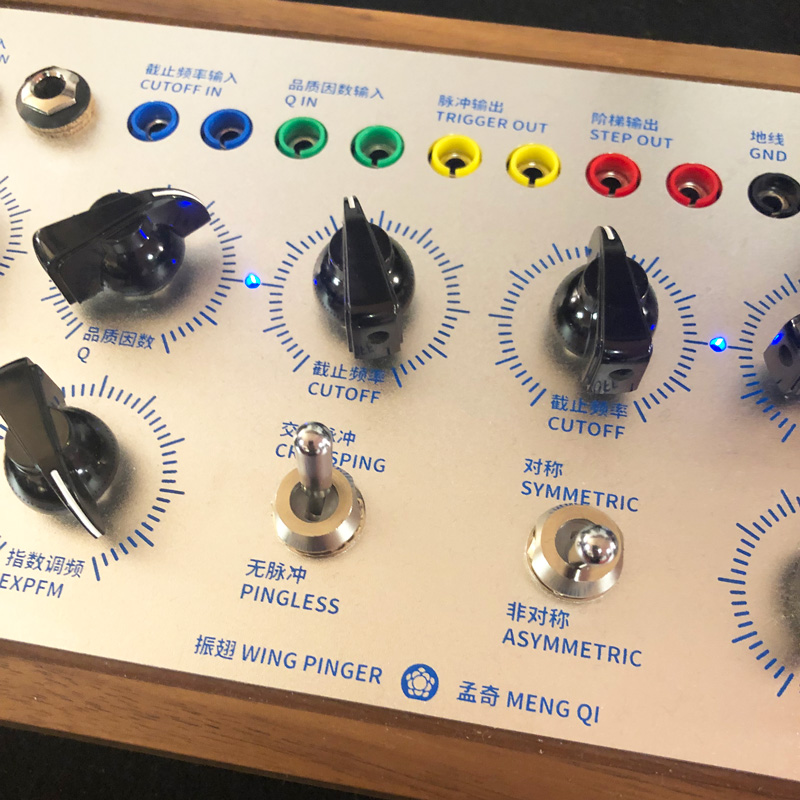
His newest creation Wing Pinger is a beautiful stand-alone desktop instrument built around the filter-pinging—a synthesis technique when short pulses are sent into the filters’ inputs causing it to resonate. Meng Qi takes this concept to a new level, implementing two pingable filters into the instrument capable of cross-modulation, and with a few other tricks that as easily make it a melodic instrument, as a source of sonic chaos.
The central element responsible for the modulation in the instrument are stepped voltages derived from shift registers (a concept that pay homage to Rob Hordijk’s rungler). The voltages are tuned to pentatonic scale that makes it extremely easy to generate melodies, yet with some tweaks of the knob settings the sound seamlessly transitions into screechy noisy territory. The device also features an audio input to aid the processing of external instruments, as well as several CV/Gate I/O to interface with other modular gear. Overall, Wing Pinger leaves an impression of a well-balanced machine that can sound smooth and gentle, or aggressive and unpredictable.
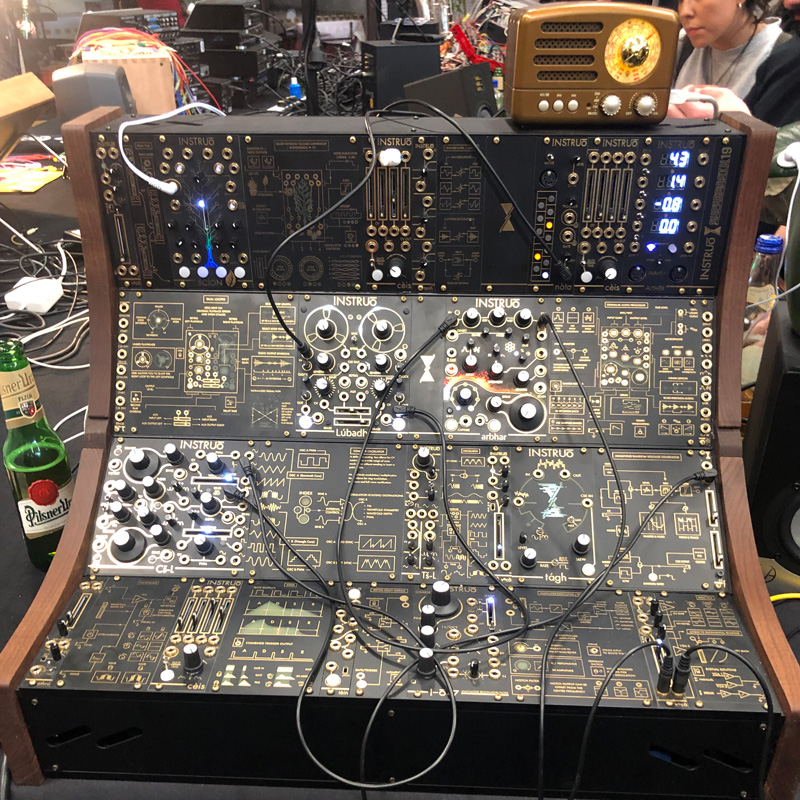
Instruo
Instruo made quite the splash this weekend with two new modules that look as beautiful as they sound! The Lúbadh is a digital looper, that features dual channels of looping that can pass audio from external inputs as well as each other. Thus giving the artist the ability to resample into oblivion! Additionally, the module features some saturation and harmonic distortion at the input. This adds a lush bed of warmth and saturation, perfect for the classical tape sampling sound! Lúbadh features a two-deck schema, allowing for a seamless crossfading between recordings, as well as a user-definable routing of the input signal. These small innovations allow for a galaxy of experimentation as one imagines the implications of a module like Lúbadh being present in almost any Eurorack ecosystem.
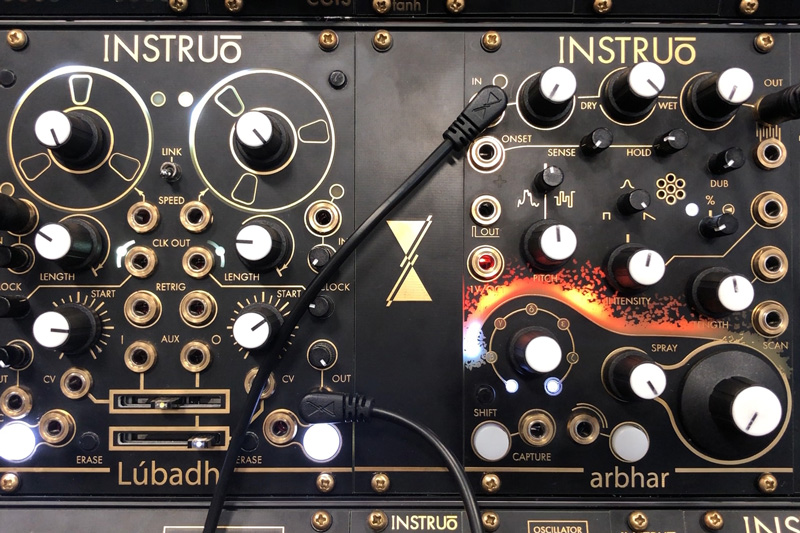
The Second module Instruo has released this year is the Arbhar! The Arbhar is a granular signal processor that allows for stunning windowing, and even some wavetable functionality at the right settings. Boasting eleven seconds of recording time, the Arbhar also offers an interesting take on overdubbing functionality making highly complex soundscapes readily available! The module also features interpolation between various grain envelopes as well as control over the zero crossing between these grain windows. This makes the Arbhar an experimental new take on granular synthesis, as it seems to make a conscious effort to blur the line between what constitutes a sample and what constitutes a grain! This interest in making changes that develop into larger ripples is what keeps us so interested in Instruo, and we're stoked to see what they'll surprise us with next time!
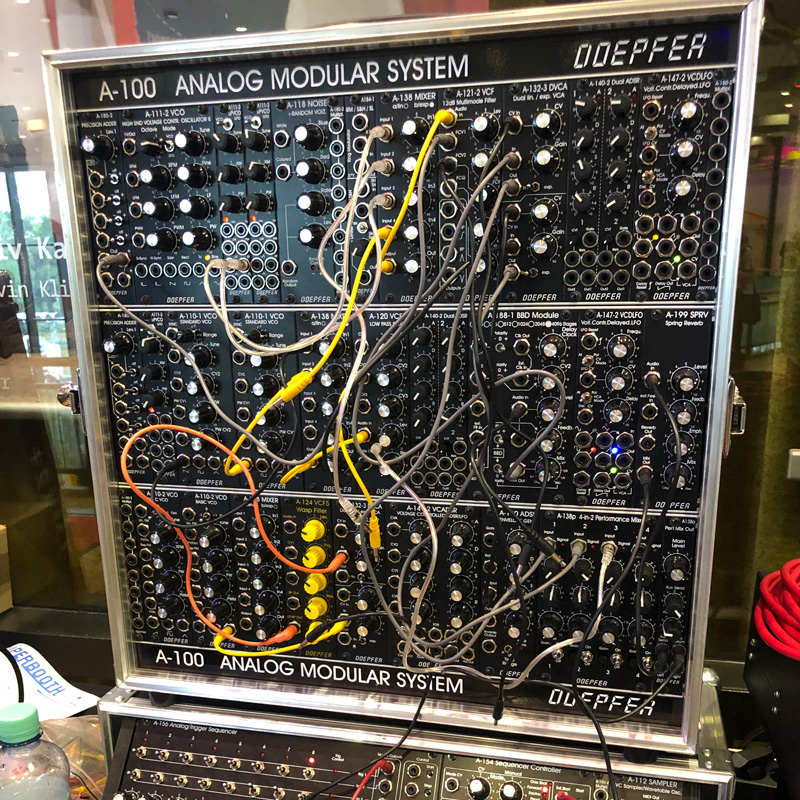
Doepfer
Doepfer comes out of the gate swinging, with their new Slim line of modules; a line of utility modules that may take the lead as lower-cost alternatives in Eurorack's increasingly ballooning price point. The first module we'd like to talk about is the A-111-6 a complete synth voice, the module includes a triangle-core VCO, a 24dB low-pass VCF, a VCA ad an envelope with A/D, ADSR, and A/R functionality! The second module in this line is the A-118-2 a noise/random generator, a perfect choice to add a little chaos into your patch. The A-121-3, is a multimode VCF with a 12dB/octave cutoff slope, and features four simultaneous outputs. This is not the whole of the series, but we thought that each of these particular modules were definitely the ones to be excited about!
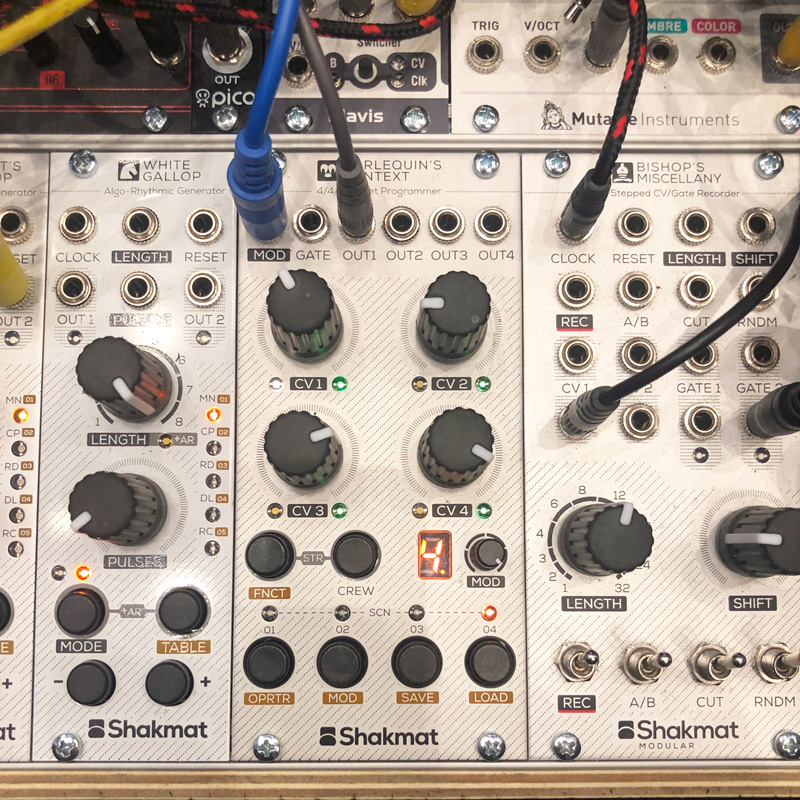
Shakmat Modular
Shakmat came to the party with a whopping six new modules! Firstly, let's talk about the Aeolus Seeds: a module designed to unlock the ability for vector synthesis in one's Eurorack system! This module is built upon four VCAs controlled by a quad modulation source. This means that the module can fluidly morph an incoming signal into any one of its four outputs. This allows for an advanced mixing solution, providing the synthesist with an option to mix their patches in quad.
The second module introduced is the Aeolus Mixer. The mixer is an expansion module on the Aeolus Seeds and almost triples the channels the Aeolus Seeds can handle! Additionally, the module has a switch that allows for 5.1 capability!
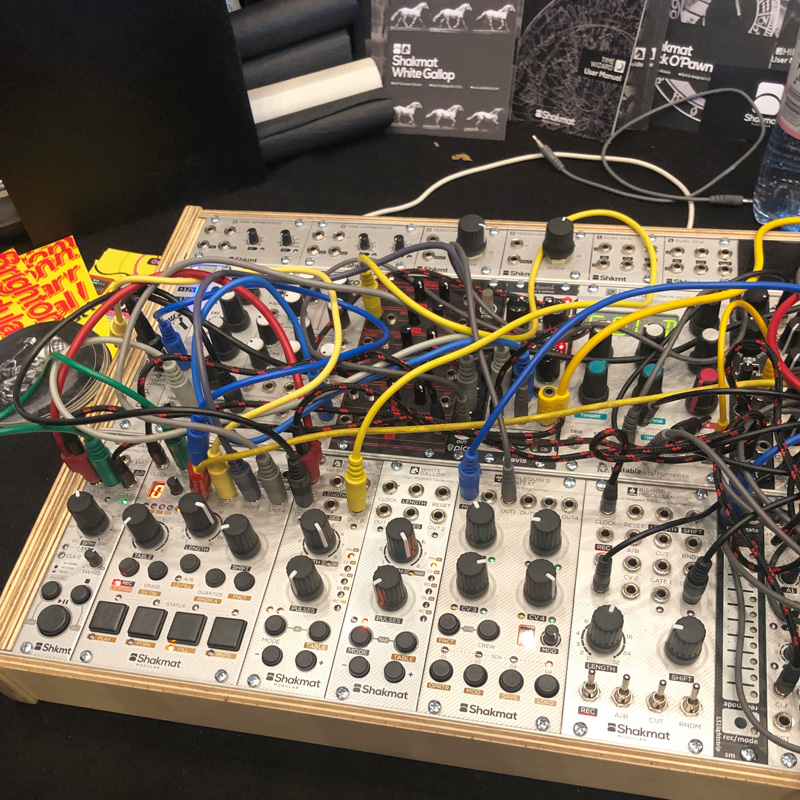
Our last 3U module from Shakmat is the Harlequin's Context. The Harlequin's Context is a new voice on the scene in the world of preset modules. Featuring four assignable outs, that can output almost any modulation source, the module can then store these parameters into scenes. These scenes can be recalled, sequenced, and even morphed between, making Harlequin's Context a deeply powerful utility for your Eurorack system.
Next, we can move onto Shakmat's 1U offerings this year! Shakmat is releasing a set of beautifully crafted utility modules that offer conveniently useful features in a minimal amount of rack space. The Tessitura Tailor is an octave switch that allows transposition of -2 or +2 octaves. The Time Apprentice functions as a dual channel clock divider, equipped with independent division knobs per channel! Lastly, we come to the Dual VCA—a dynamics management module whose name directly reflects its functionality—two VCAs packed into a 1U space. Shakmat has really brought their A game this year, and we can't wait to see the patches that come from them!
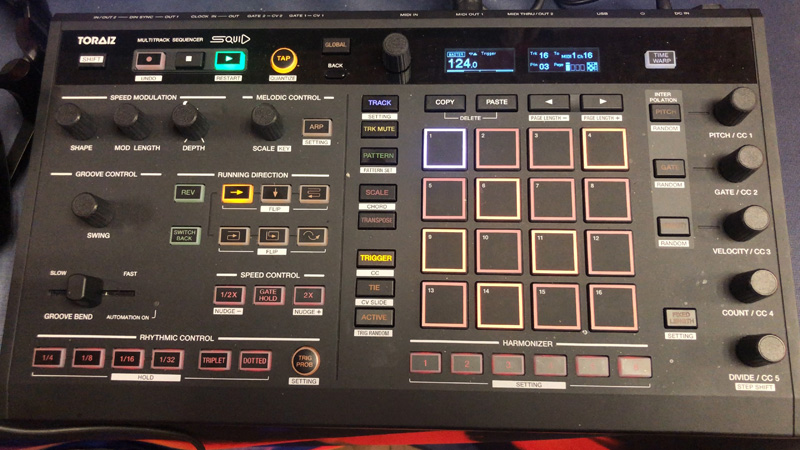
Pioneer
Pioneer has been trying to make its grand entrance into the world of synthesizer production for a couple of years now. Their Toraiz line though has not been met with universal acclaim. It is our feeling however that this might change soon with the introduction of the Pioneer Toraiz Squid! The Squid seems to be a full-on sequencing powerhouse with eight channels of either CV or MIDI, as well as a lush set of macro controls to chop and mangle your sequences. Additionally, the Squid adopts the use of Elektron-esque parameter locking which greatly opens up the possibilities of your sound design. Another feature we're particularly excited about is what Pioneer is calling the Groove Bend. The Groove Bend feature is positioned on a spring-loaded crossfader, it allows you to create shifting grooves via movement of the crossfader. This is a very interesting new method of rhythm performance, that to my mind is a fairly novel approach to beat construction. Making the Squid something to truly watch out for as we cast our sails further and further down Superbooth's wine-dark sea.
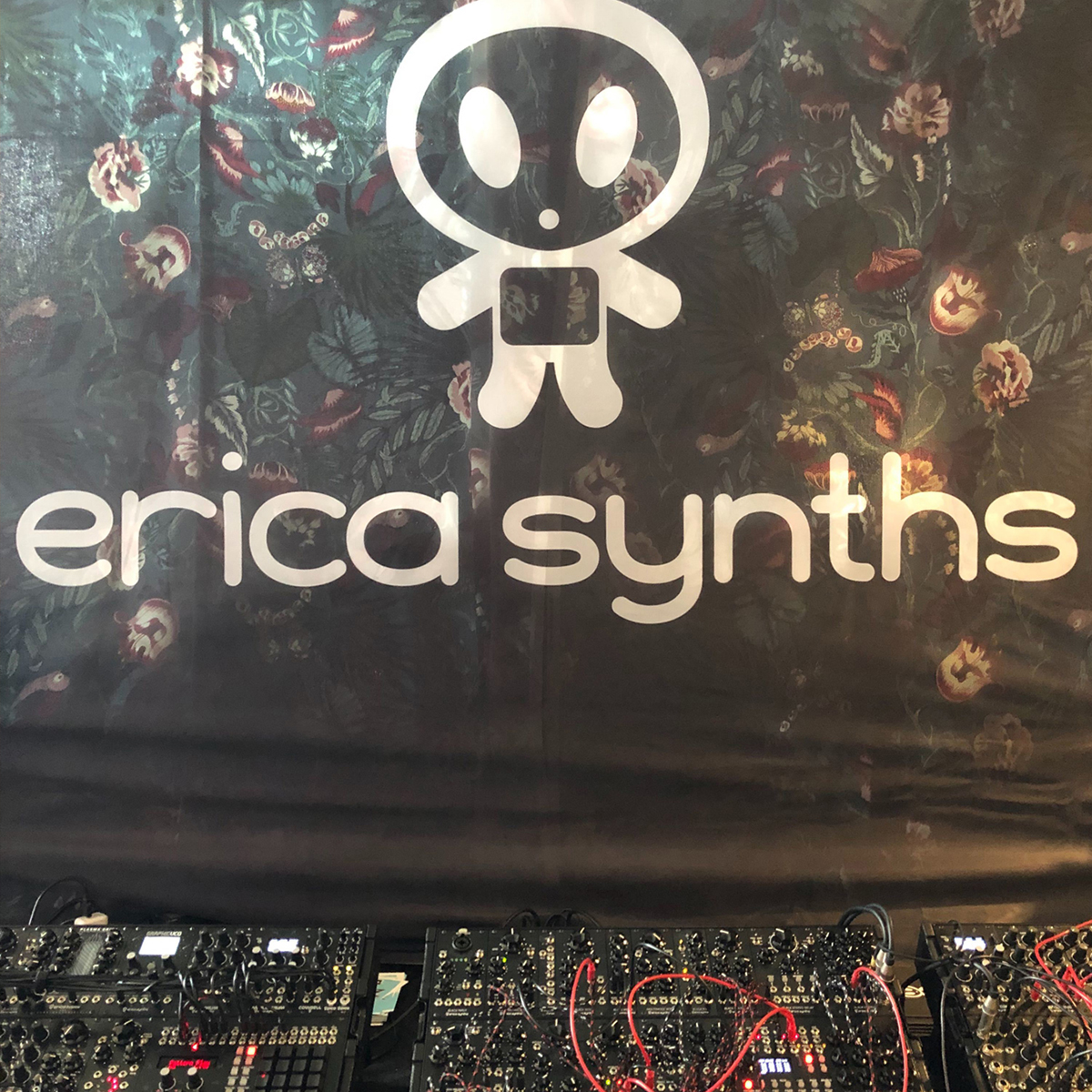
Erica Synths
The overachievers at Erica Synths have brought a staggering amount of modules with them to Superbooth this year, with a cavalcade of new modules. Among the ones that we are most excited about is the Black Spring Reverb—a new reverb module that utilizes an interesting dual tank structure, for the mixing of different reverb textures. The module also includes a feedback function that can create delay or filtering for extra spice. This elevates the Black Spring Reverb into a stunning multi-effects processor. We are really thrilled about that one!
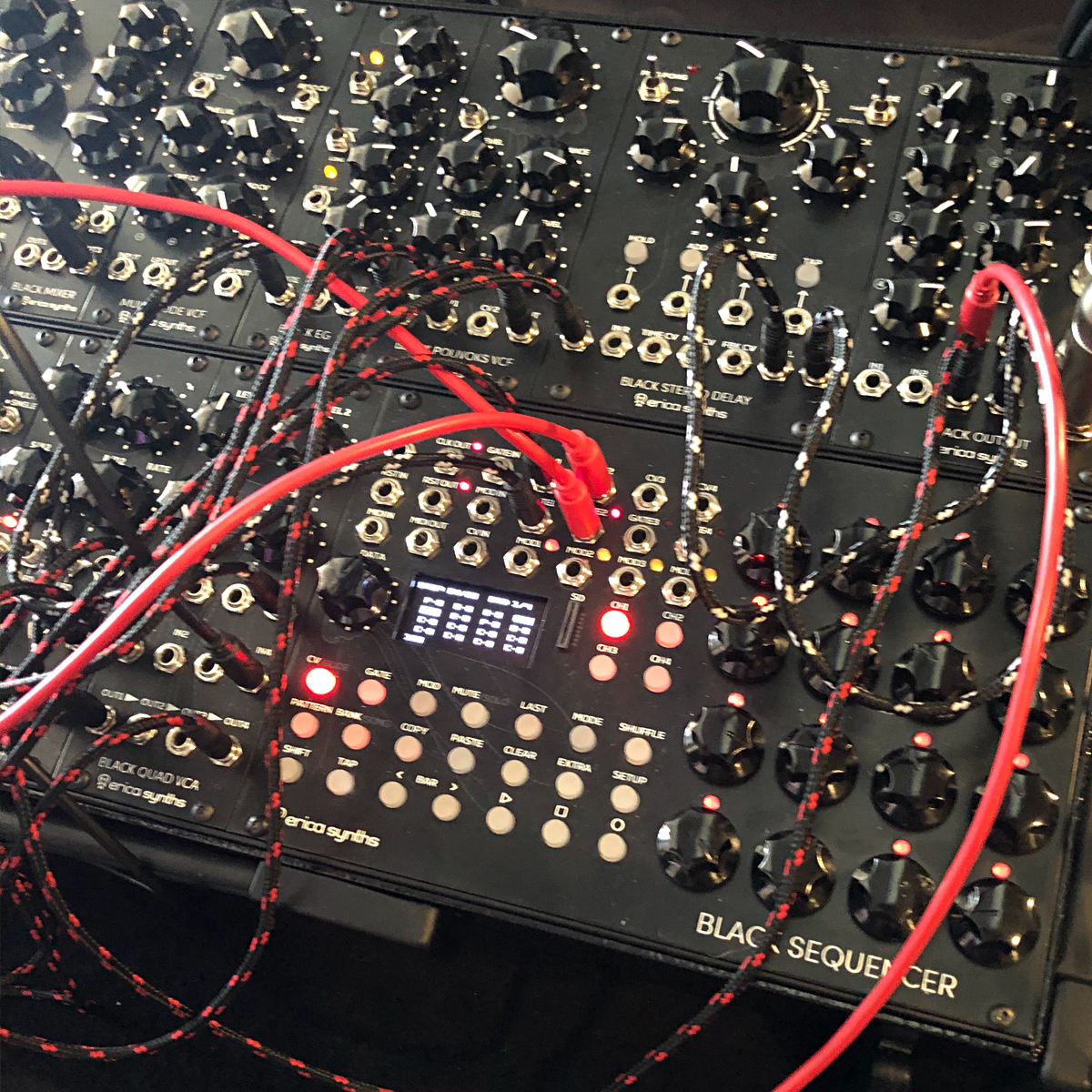
Another module in the manufacturer’s stable is the Black Sequencer. A beautiful sequencer, set squarely in the lineage of the classic Moog 960 sequential controller, the Black Sequencer offers some interesting updates to the concept. These include 64 steps per pattern, independent meter per track, CV and Gate recording, as well as MIDI in/out.
Alas, though Erica has put out many more modules; we can only talk about one more, so let us focus our attention on another distinctive new product from the manufacturer—the Black Input. The Black Input is a utility input module that has a lot more going on than it first may seem. The module features a preamp at the input stage, ¼”, 3.5, and XLR input options, an envelope follower and a pitch-tracking function. Erica has really outdone themselves this year, and it is very encouraging to see their ambitions as designers continue to grow!
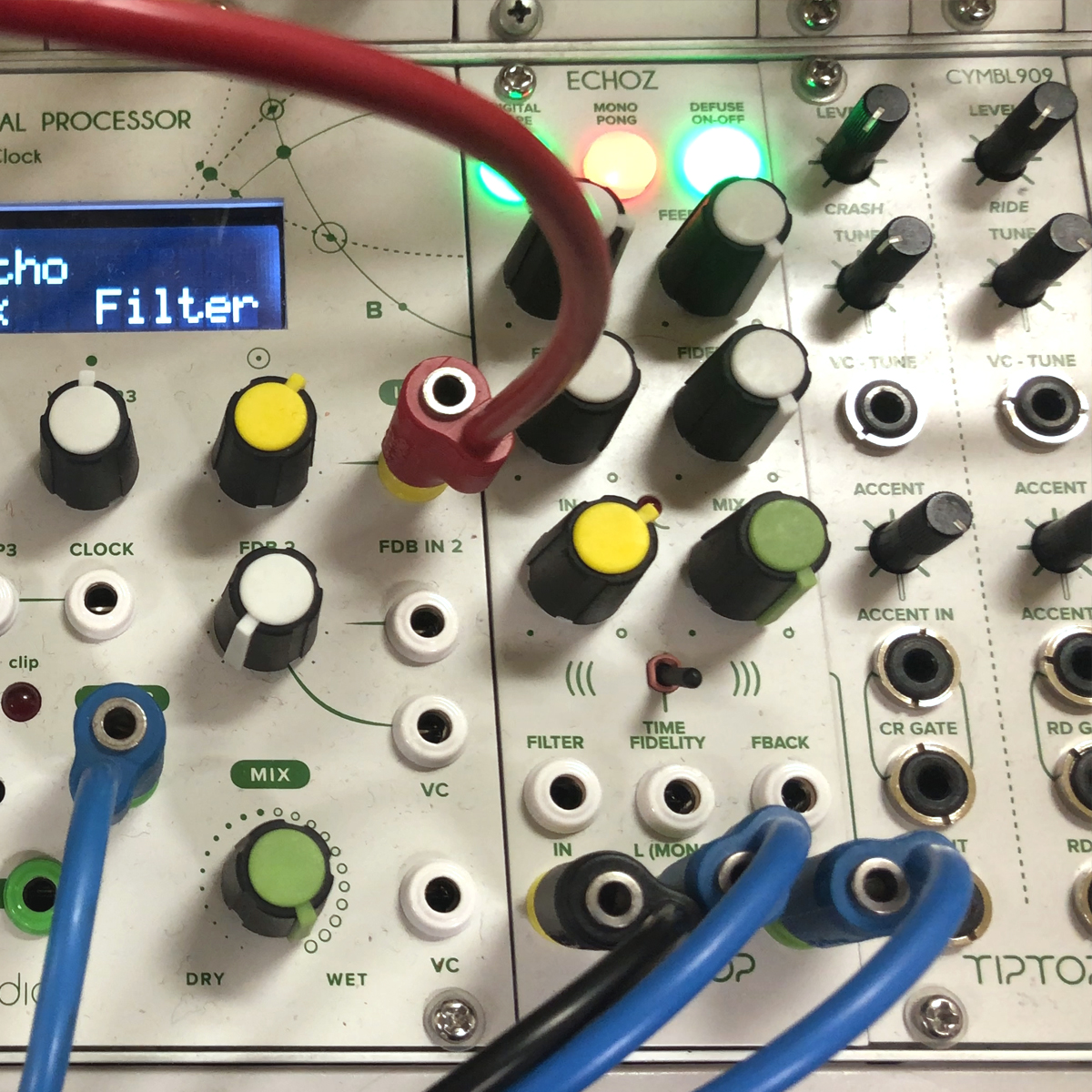
TipTop Audio
Tiptop’s unveiling at Superbooth was all about time effects and DSP. The manufacturer presented two products, both of which offer high-quality delay effects in the Eurorack format. The first one is the Echo cartridge for their excellent Z-DSP multiprocessor module. Essentially, Echo is a tape delay algorithm which meticulously replicates the classic effect in the new format. The concept gets slightly expanded in a standalone version of the product—the module called Echoz. Significantly smaller than the 28HP wide Z-DSP module, Echoz promises to become one of the go-to modules for those who want a dedicated tape-delay in their system. With Echoz, the type of delay can be easily alternated between the digital tape, and mono pong buttons, while the defuse button will add extreme spatial effects. The character of the delay lines can be instantly modified via the time fidelity switch.
Modal Electronics
British synthesizer brand brought to the Superbooth an updated and improved version of their wavetable monosynth CRAFTsynth 2.0. The distinction between the new version of the synth and its predecessor start right with its appearance. The visual aesthetics of the CRAFTsynth 2.0 looks nothing like the first version of the product, and it largely follows the format of the companies other portable synthesizer SKULPT. Connectivity-wise the portable machine packs standard MIDI 5-pin I/O, 3.5 mm jacks for line, and headphones outs, as well as sync in, and out. CRAFT can be powered via USB or three AA batteries. The synthesizer patches are programmed via onboard endless encoders, and the keyboard follows a less conventional scale layout with plenty of options for configurability. The filter also got an upgrade from the original. It also resembles the one implemented in SKULPT with a distinct morphing between modes feature. On all the levels CRAFTsynth 2.0 seems to be significantly better than its forebear.
IK Multimedia
Also present at Superbooth this year was IK Multimedia who introduced us to their new drum machine, the UNO Drum. The UNO Drum is inspired very heavily by the classic TR 909, featuring a hybrid voice set of analog and sampled drum sounds. Where the UNO Drum creates its own path however is the machine's freely assignable pads, allowing the user to choose between the UNO Drum's synthesis or sampling engines. Additionally, we would be remiss if we didn't mention the UNO Drum's price-point, making it one of the most affordable fully fleshed out drum machines we've seen in a long time. It is these aspects that make the UNO Drum so exciting to us. In some way, we must always ask ourselves (no matter how amazing the instrument is) who has access to this? The UNO Drum answers with "Everybody!"












